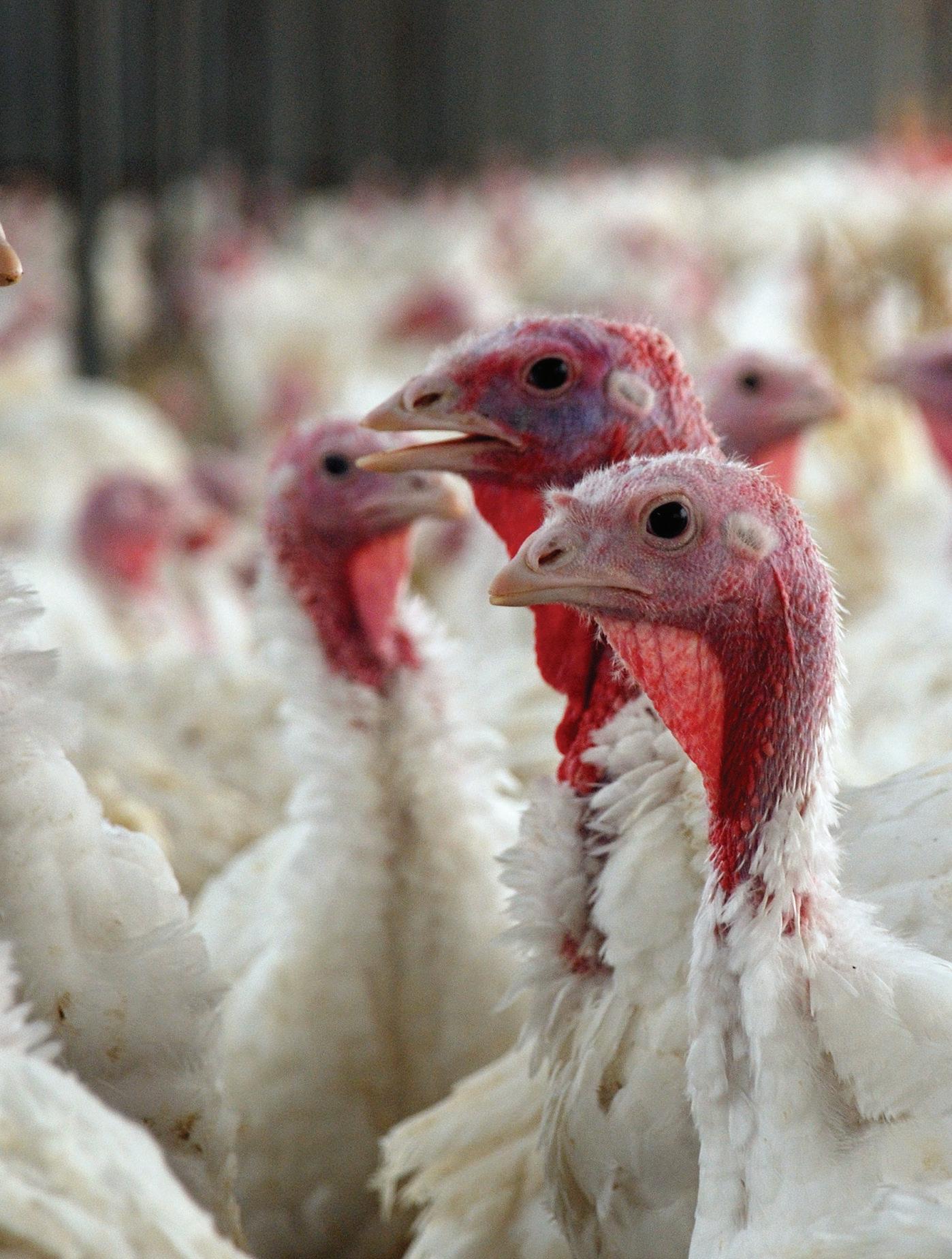
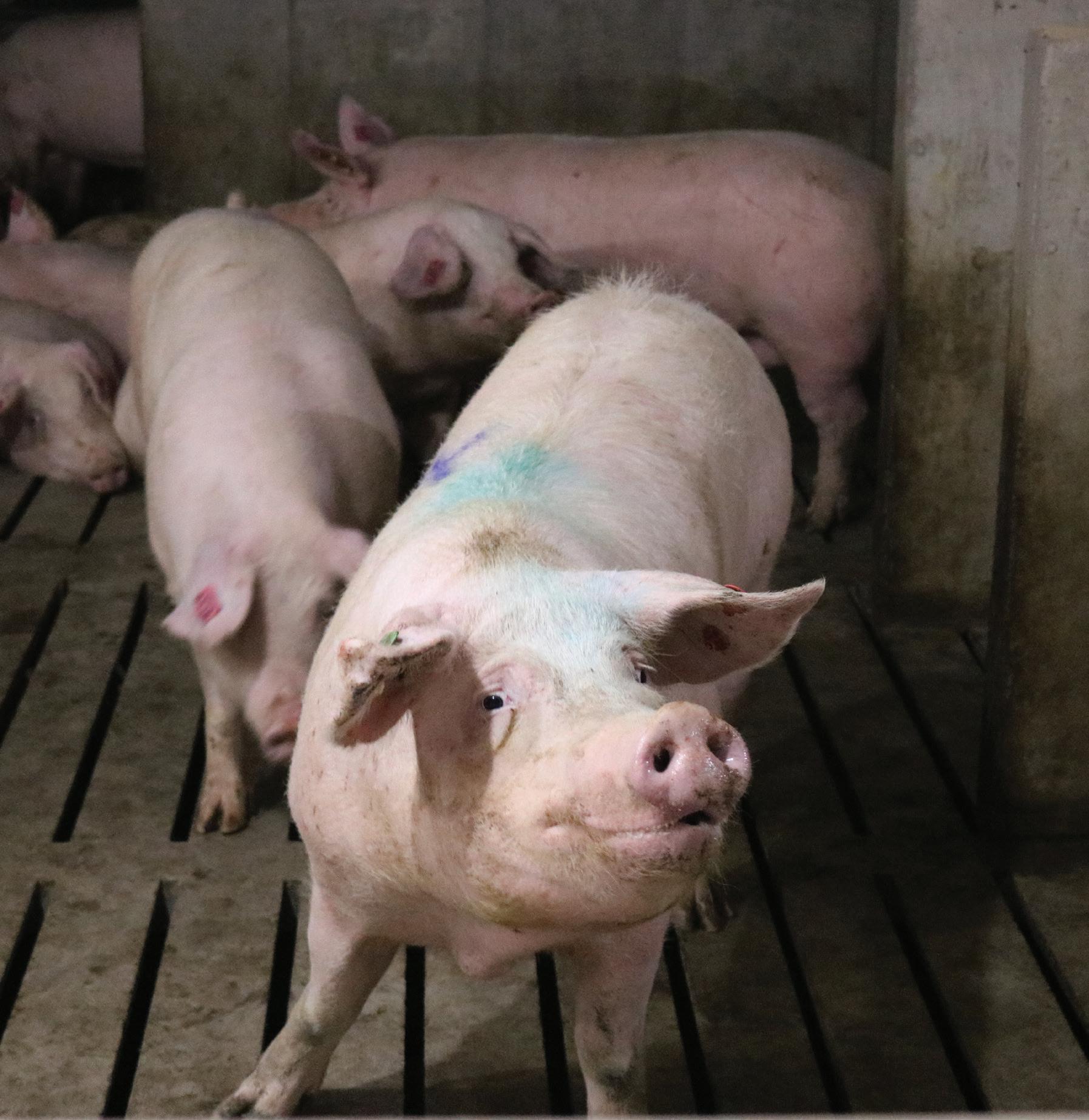
the modern FREE | 2018
PRODUCER FirstIssueReleased IN THIS ISSUE: Questions to Ask an ESF Salesmen City Boys’ First Time in a Hog Barn Grilled Pork Chop Recipe
Sponsored By:
A Note from the Editor,
The Modern Producer is a publication dedicated to bringing today’s producers an inside look into new technologies and equipment in group sow housing and poultry housing. Our goal is to provide you with clear and honest insight that will assist you in your future building decisions and daily barn operations.
In this issue we explore stories from current producers, offer helpful research and data within each industry, share a few of our favorite turkey and pork recipes, and we've even included a fun entertainment section for the kids (or the young at heart).

Our goal is not to convince you what technologies you should incorporate into your barns, but rather to raise important questions about the future of these industries and how you can be poised to succeed. With this in mind, we hope you enjoy this selection of articles. If you want to read more articles like these, please visit info.newstandard-group. com/blog.
- The New Standard Group
CONTENTS About New Standard Kids Fun and Games Pig Jokes Outstanding Nedap Dealer How Timely Gestation Pen Data Reduces Inefficiencies Group Sow Housing Barn Highlight Pretzel Breaded Turkey Recipe City Boys' First Time in a Hog Barn Quick Tips for Choosing Hog Pen Panels Meet Kase van Ittersum Why Include Tunnel Ventilation in Your Poultry Barn Myths About Feeding Sows in Group Gestation Group Sow Housing Case Study What is the Future of the Pork Industry What to Ask Your ESF Salesman Grilled Pork Chop Recipe Data is Money Sow Housing Remodel Fast Turkey Facts Turkey Production at Pembrook Colony Brief History of ESF Pig Jokes BLT Recipes 5 6 8 10 12 14 16 18 19 20 22 24 26 27 28 38 30 40 32 43 34 44 46
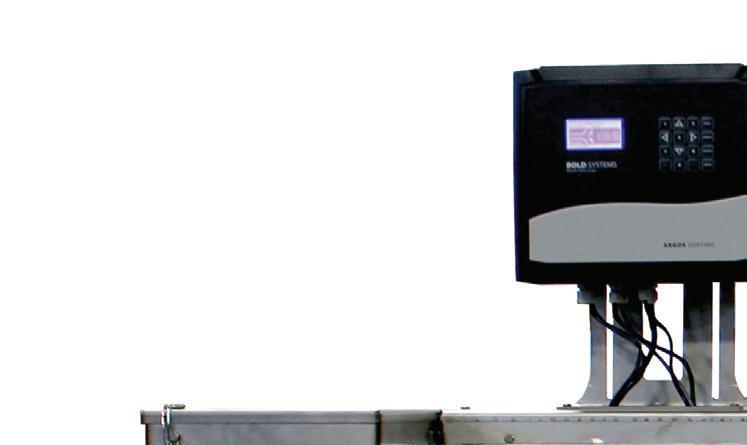
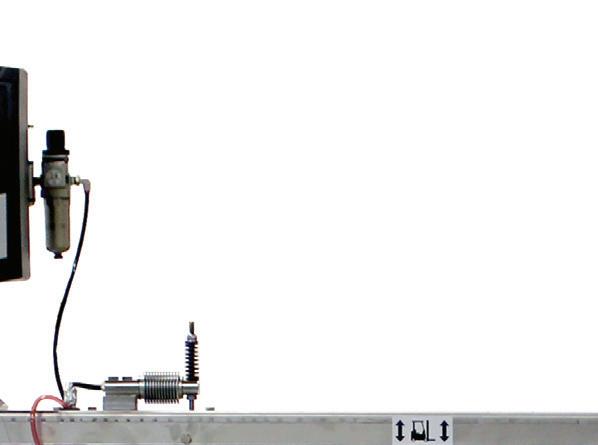




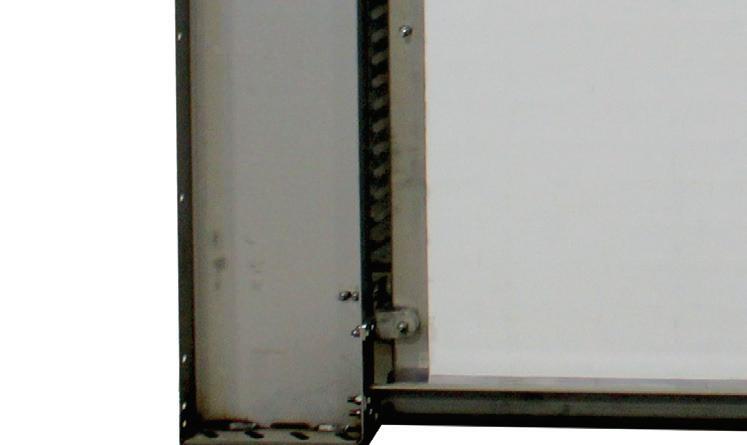




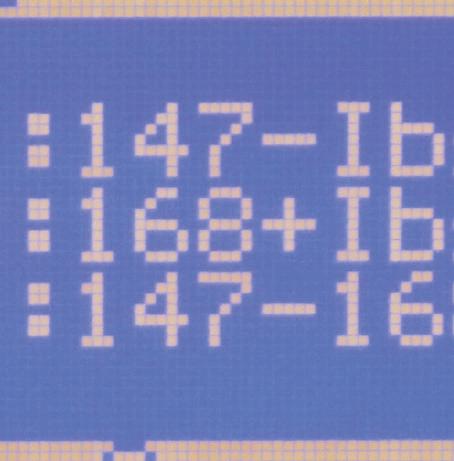

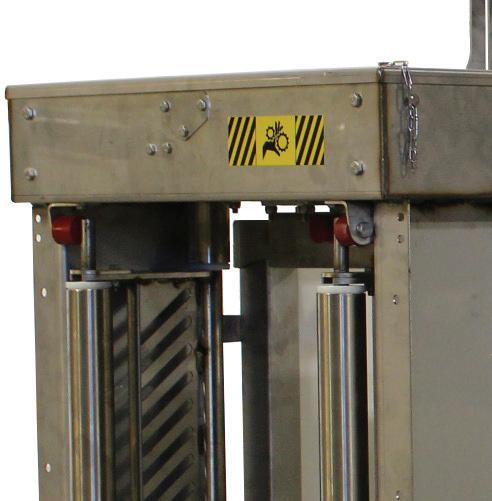




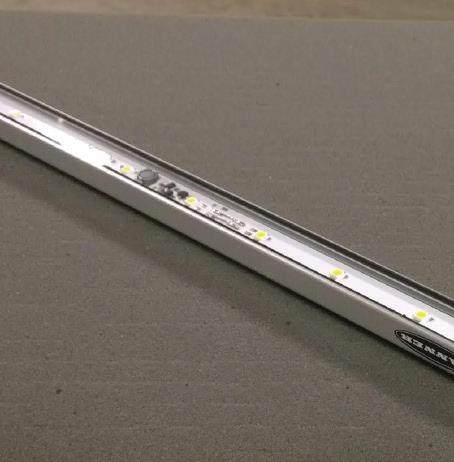
with capability for remote touch screen interface for up to 20 scales
construction and design Solid sidewalls with LED light to keep pigs moving forw ard Single load cell
weight bar linkage
Traction Coating
Diameter Gate Rollers Precision Assembly with oversized cylinders
The BOLD Systems ÒArgos Sort ScaleÓ brings the hog sorting scale concept into the 21st century. With a focus on strength of construction, ease of use and technology for todayÕs rapidly advancing world, BOLD developed a sorting scale that is unequalled in the market. Display (LCD)
Rugged
and
Durable
Larger
Our Mission
The New Standard Group was founded in 2006, and in the same year we opened our first office in North America. In 2007, as we completed our Eagle Creek Colony Electronic Sow Feeding project, we made a commitment to always setting producers up for future success and constantly setting new barn design standards. With this commitment, we understand the value of providing the modern producer with the education, materials, and equipment he or she needs to run a top tier operation.


Over the last decade, we have been able to provide new generation technologies and ideas to promote sustainable and profitable animal husbandry. and profitable animal husbandry. Our focus has always been to provide our clients with advanced facilities that enable them to operate efficiently and adapt to ever-changing technological and industry demands. This focus has expanded to include setting each producer up for success by providing informational materials and support that allow them to keep up with modern trends in the pork and poultry industries. The articles within “The Modern Producer” are intended to be helpful resources that not only educate, but also raise questions about the future of animal husbandry.
Over the last decade, we have been able to provide new generation technologies and ideas to promote sustainable Our Attitude
“Serve our valuable clients and partners beyond expectations.”
A LEADING EXPERT IN GROUP SOW HOUSING IN NORTH AMERICA

Meet Kees (Kase) Van Ittersum
Kees (Kase) van Ittersum has been with New Standard as part owner since its beginning. He special izes in hog barn design and has been involved in Electronic Sow Feeding (ESF) since 1995. The group sow housing and ESF movement started in Europe in the late 90s while Kees was still living in the Netherlands. There he gained a great amount of experience with loose housing hog barn design and equipment
When he moved to Canada in the early 2000s, the movement had not yet reached North America, but he knew it would soon come. While Kees has always sold ESF and loose housing equipment wit h the focus being on barn efficiency and precision farming, North American animal welfare pressures kick started the group sow housing movement around 2007. Learn more about Kees and his role in the development of North American sow housing.
6
BORN AND RAISED IN DUTCH AGRICULTURE
Kees was raised on a dairy farm in Holland, and he went to school and earned a bachelor degree in Agriculture, Animal Husbandry, and Business Administration. After finishing his education, Kees served in the Dutch army where he developed his managerial skills at all levels of an organization through officers’ training. After serving in the army, he was back into agriculture working as a salesman of vet products. After a few years, he transitioned companies and roles and became a ventilation specialist for 6 years.
Then, in 1995 he became CEO for a company, named CAWI, that specialized in manufacturing and selling pig
MOVING TO CANADA
In 2002, Kees moved to Calgary, Alberta where he opened the sales office for CAWI Canada Ltd. He had experienced the group sow housing revolution in Europe, and even though North American policies were not yet changing, he believed the revolution would eventually reach Canada and the United States. As CAWI Canada developed, it specialized in hog and poultry equipment and ventilation. Four years after moving to Canada, Kees and another Dutch partner, Jan van Issum joined forces with brothers Ti m and Kevin Kurbis to start the New Standard Group and CAWI Canada became New Standard West. CAWI Canada
equipment in Europe and Asia. In 1999 he purchased CAWI and merged with a local company. An interesting note is that CAWI was involved in building the first ESF models with Nedap. The Dutch specialized in livestock identification systems, and they were able to take the systems they used in dairy farming and convert them to an ESF system that has developed into a complete sow housing management system. While CAWI sold and installed another brand of ESF equipment, they switched and became a Nedap dealer again in 2000.
sold a few ESF systems from 2002 to 2006, but many farmers did not yet see the need to convert to group gestation pens. That changed in 2007 when growing animal welfare concerns from end consumers started forcing large food companies to make changes. In 2007, both Maple Leaf and Smithfield announced that they would be converting all of their barns to loose housing within the following decade.
NORTH AMERICAN GROUP SOW HOUSING MOVEMENT
These decisions changed the attitude towards group housing in North America. In fact, at the time New Standard was in talks to build a large traditional stall barn for Eagle Creek Colony, but the conversation immediately switched to group gestation pens and ESF equipment after these announcements. Kees was able to bring in his expertise to design the Eagle Creek sow housing facility, which set the new industry standard in North America. The barns built after the Eagle Creek facility followed the same group gestation pen and ESF model, and these hog barn design standards continue to be copied today.
The Canadian Code of Practice and some state legislation in the U.S. are requiring the transition to loose housing and North American consumers are continuing to demand that
their pork be produced in facilities that house their gestating sows in group pens
While consumer pressures do drive the market, New Standard does not believe producers should convert to group gestation pens because of these pressures. When designed, equipped, and operated properly, group housing and ESF facilities improve production over stall barns. Kees and New Standard have always sold ESF equipment based on improving production, increasing efficiency, lowering operating costs, and improving sow health. When you are operating a loose sow housing facility properly, you will also have happier sows, and what's bad about that?
1995 1999 2002 2006 2007
7 New Standard Hog Update 2017
KEES BECOMES THE CEO OF CAWI PURCHASES CAWI AND MERGES WITH LOCAL COMAPNY
MOVES TO CALGARY, ALBERTA. OPENS SALES OFFICE FOR CAWI
STARTS NEW STANDARD GROUP WITH JAN, TIM, AND KEVIN
MAPLE LEAF AND SMITHFIELD COMMIT TO LOOSE HOUSING
In Open Sow Housing Data is Money

Data analysis in pig production has long been essential to making smart management decisions. Now as the industry moves to group sow housing, data is more important than ever. There is a common belief that you cannot track sows efficiently in open hog pen designs, but that is simply not the case. With the proper barn design and data management system in an open sow pen, you are able to track daily performance metrics much better than you could in a stall barn.
Although you are able to track sow performance more easily in group sow housing, it takes a well-engineered hog pen design and data collection platform. With the proper system, such as the Velos platform used by Nedap, data really is money. You are able to catch performance issues earlier, and you are able to fine tune your operations to be as efficient as possible, saving you on feed and labor, as well as other operating costs.
Track the History of Each Animal in Open Sow Housing
A complete barn tracking and management system allows you to track the complete history of a sow from her first day as a gilt through her whole life as a productive sow. Data is collected automatically through feed stations, sow weight scales, heat detection units, farrowing crate feeding, breeding stall feeding and other identification systems, allowing you to study each sow’s progress and performance. This allows you to identify the expenses of each area in the barn and directly associate those expenses with sow performance.
Such detailed data assists you in making more educated adjustments. You are able to calculate specific feed rations based on data rather than best guesses. With the addition of scales, individual feed stations and heat detection units, you are also able to identify the status of each sow with minimal additional work requirements for your barn staff.
Identify and Treat Sick Pigs
Collecting daily data on your sows allows you to identify poor performance trends that could be stemming from the onset of health issues. You will be able to identify and treat your sick animals before you see a large performance dip.
Simply program the management system to alert you when it detects a lack of sow weight gain, feed consumption or other performance metrics, and you can treat the animal quickly. With Nedap’s Electronic Sow Feeding stations, you are even able to program the system to separate the sows into a holding pen to make treatment easier. Automatically collecting daily sow weights and other performance metrics will help you make those decisions to improve your health ratio without manually collecting or entering any data.
Access Data Anywhere
In today’s age, we need information quickly; waiting to look over daily results can cost you precious time and money. That is why it is important to have a barn management system that can be accessed from anywhere and from any device. Nedap’s ESF system includes Velos software that can be accessed from any device with a web browser. It is a cloud based platform that allows you to track barn performance anytime anywhere. Additionally, the system will notify you of potential problems based on parameters you set so you don’t need to pore over reams of data to glean out what is important.
Your time is valuable; the time your staff spends in the barn is valuable. Nedap Velos, incorporated properly into a sow housing system, can be the most profitable investment you make in your barn. Without the ability to collect data, you’ll be left scratching your head while trying to decide how to get your barn to make money.

detailed data assists you in making more educated adjustments. You are able to calculate specific feed rations based on data rather than best guesses
How Timely Gestation Pen Data Reduces Inefficiencies
How We Collect Data in the Sow Pen
On our sow farm, we utilize a combination of PigChamp, Velos (Nedap ESF data) and AP controls to gather all the information we need to make well-educated decisions. With PigChamp, we use handheld devices to record some PigChamp activity, and we have installed computer and printer workstations throughout the barn. Thus, all data collection and reporting is accomplished “in the barn”. Our vision is that data is current (same day), accurate, and always focused on enabling the barn staff to be most successful and efficient.
Identifying Health Challenges Among Our Sows

Every day, we find each gestating animal that did not consume her feed budget and conduct a health and treatment assessment. Before we begin daily pen chores, we look at the daily pen feed consumption
By: Kent Mogler
which can quickly tell us when health challenges are arising by the amount of feed remaining in the pen’s allotted feed budget. This increases our attentiveness to health observation as we perform pen chores.
Another win we had after implementing electronic sow feeders and the Velos software was getting the proper feed plan to each animal by integrating Body Condition Scoring into each plan. With this system in place, sows coming into farrowing are extremely uniform and properly conditioned for a successful farrow event.
New Processes with a New Hog Barn Design
We believe the concepts in the Four Disciplines of Execution (McChesney) are very applicable in systems management, and we continue to refine our application of these 4 disciplines (4DX) which are:
10
1. Know your wildly important goal(s) – WIGs
2. Have a good lag indicator and a great lead indicator for each WIG
3. Have a compelling scoreboard
4. Implement a cadence of accountability
We are very focused on the elimination of the eight deadly wastes from lean manufacturing. Computer systems can easily add a lot of waste like: waiting, redundancy, correction of data, etc. Computer systems often do not provide the efficiency benefits we were hoping for. We have put focus on making our “computer and data entry time” significantly less.
Improving Efficiency Through Auto-Generated Lists
In order to cut down on waste, we have programmed our software to automate and print a few different daily lists. The first list is the ESF “Non-Eater.” This report not only tells us who hasn’t eaten, but also gives us each sow’s most recent marking or status. This allows our staff to easily and efficiently identify, check, and treat the animals in the large group gestation pens.
Another example is our vaccination and pregnancy check events. Two days prior to the tasks, we are able to tell the system to mark (paint) each sow a color according to the task that will take place. On the day of the task, instead of having to take the time to set a parameter and print the list, it is printed and waiting for our staff to use.
Keeping an Up-To-Date Scoreboard
Can you imagine walking into a basketball arena without a scoreboard? Or making investments in companies with no access to current stock market prices? In applying the 4DX, we also are passionate
about having a timely and accurate scoreboard which is visible to all staff.
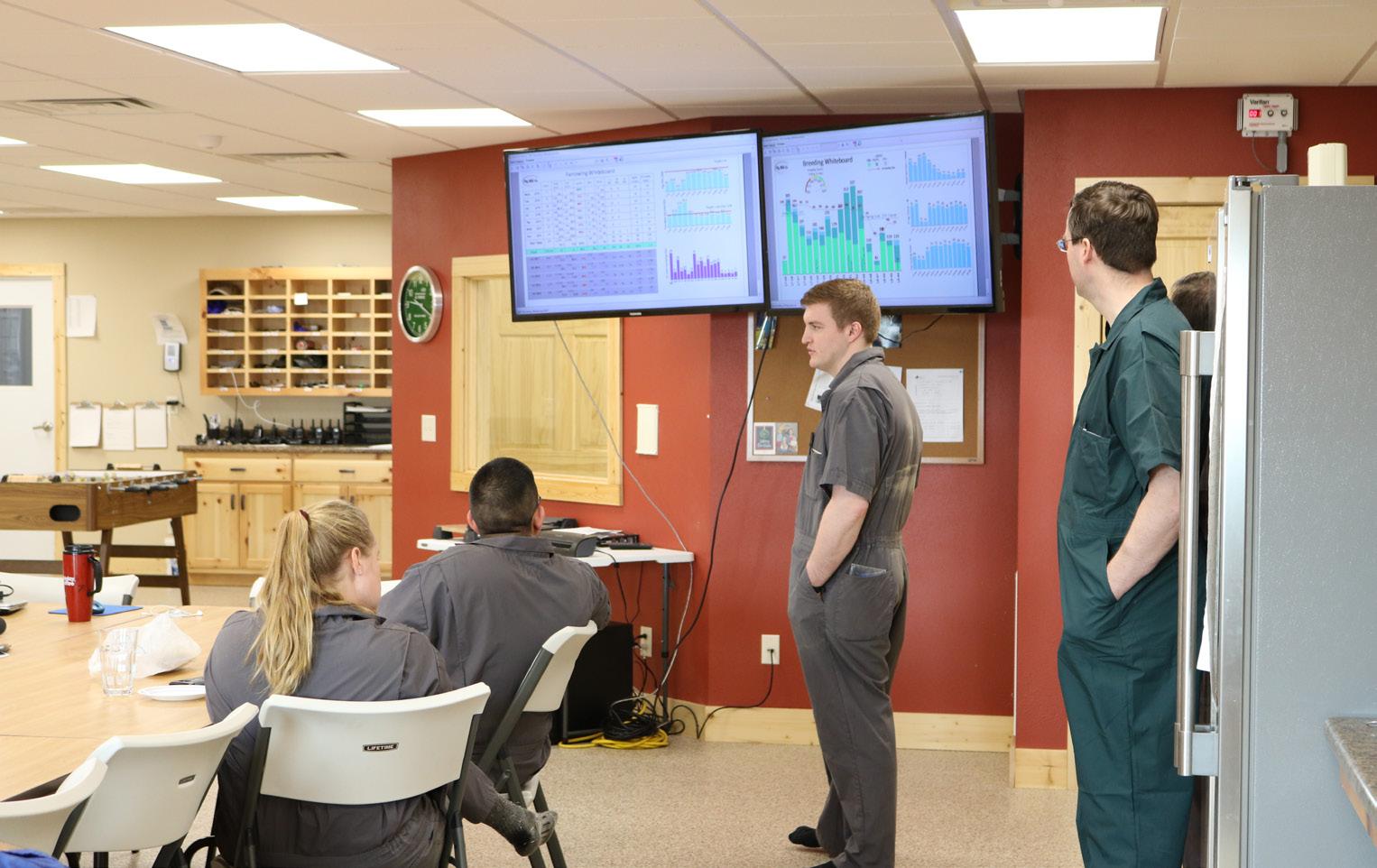
As we’ve evolved, our data has become more timely and accurate because we publish a daily scoreboard directly from the system. We now publish a breeding, farrowing and nursery scoreboard that has today’s results. It automatically updates directly from the PigChamp and Velos systems so we don’t waste time “updating, running, reviewing, correcting and printing” reports. This operating practice improves data timeliness and accuracy within the system (a cadence of accountability) and all reports become more reliable, timely and useful. The challenging part comes in prioritizing your needs, integrating data across systems and keeping the data infrastructure simple and easy to support.
The Bottom Line
With a combination of all our data systems, we have been able to make sound financial decisions. We continue to look for ways to further improve efficiency, accuracy and timeliness of all data. We also expect that all data system providers will integrate more efficiently, improve data accessibility across systems and increase their focus on front-line employee use.
11 New Standard Hog Update 2017
Chet Mogler reviewing the daily scoreboard with the Pig Hill staff.
“Can you imagine walking into a basketball arena without a scoreboard? Or making investments in companies with no access to current stock market prices?”
Rustic Grilled Pork Chops WITH APPLE CHUTNEY
It’s time to bring the grill back out of hibernation! Go ahead take off the tarp, and invite your neighbors and friends over for a fun and relaxing afternoon or evening on the patio. As we enter the weekend, we want to bring you the perfect grilled pork chop recipe. Chef John Noel Gilbertson has provided us with a recipe for rustic pork chops that is sure to please. These rustic grilled pork chops don’t require much prep, making it the perfect recipe to start your grilling season off right. Plus, Chef Gilbertson has included a recipe for apple chutney that will partner beautifully with your rustic chops.
Apple “Chutney”
In a 10-14’ sauté pan, cook onion in 1 T salad oil over low-medium heat 5-6 minutes or until walnut brown. Remove onions from pan (set aside). Reheating pan, sear apples then replace onions in pan and add juice, broth and spices. Cook all remaining ingredients at a low simmer for 10-12 minutes, reserve.
Chops
Prepare a grill to medium-high heat (about 450 degrees F). Rub chops with salad oil, garlic, salt and pepper. Grill chops over direct heat until the internal temperature reaches 140 degrees F using a meat thermometer. Remove chops from the grill and let rest for 1-3 minutes. Serve with Apple Chutney.
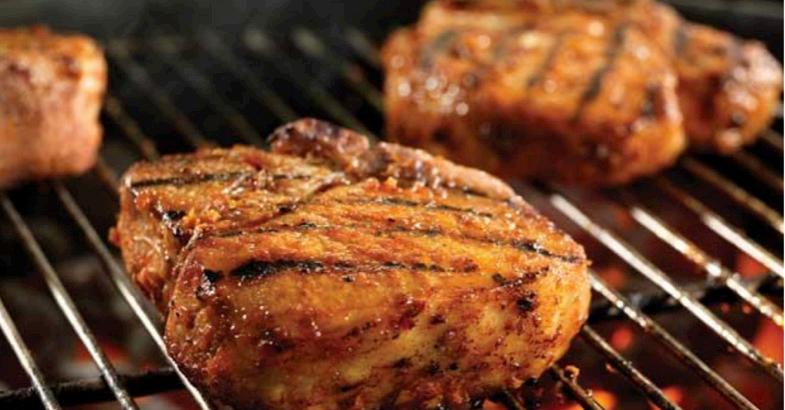
12
4 each bone in or boneless Pork Chop, 8-10 oz each 1 large onion julienned 2 peeled and diced “tart” apples 2 T salad oil 1⁄4 tsp cinnamon 1 T fresh ginger, grated 1/2 cup apple juice 1/2 cup chicken or beef broth (clear) Salt and coarse ground pepper 2 T Fresh Garlic, chopped
Chef John Noel Gilbertson, CEC - Chef Manager
13 New Standard Hog Update 2017 1 2 3 4 5 6 7 8 9 10 11 12 13 14 15 16 17 18 19 20 21 22 23 24 25 26 27 28 29 30 31 32 33 34 35 36 37 38 39 40 41 42 ConneCt the Dots
FortheKids

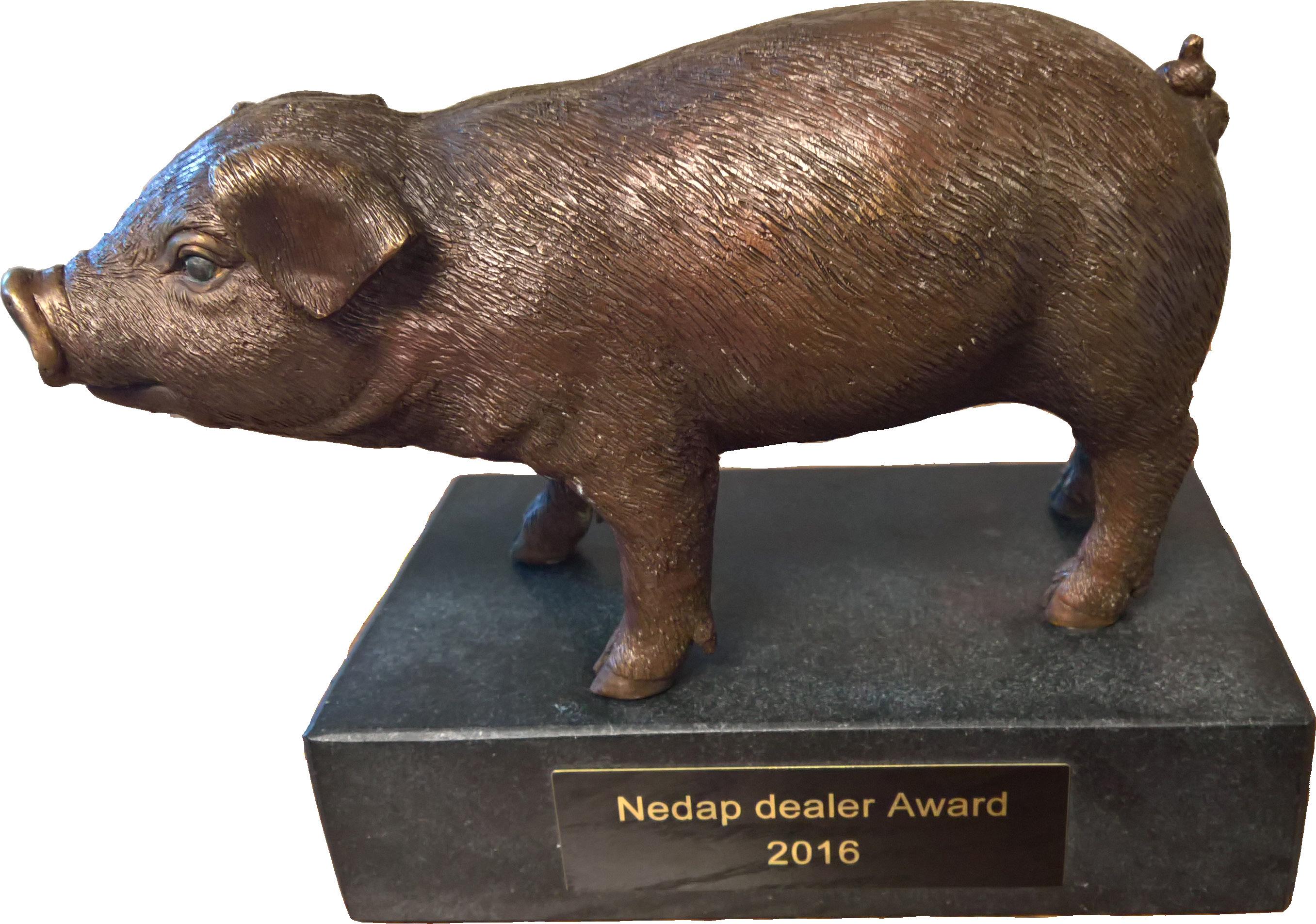
New Standard Group was recently recognized for our success as an Outstanding Nedap dealer of equipment and technology in the group sow housing industry. We are honored to receive this award and proud to be a part of Nedap’s success in North America. At New Standard, we are excited about our future spreading this technology further across the continent. We believe in Nedap’s world-leading automated systems and we will continue promoting the success and benefits of Electronic Sow Feeding (ESF) technology.
New Standard has been offering quality group housing designs long before we became a group. One of our founding partners (Kees van Ittersum) has been working with early adopters in Western Canada since he moved to Alberta in 2001. New Standard introduced the system and our expertise to Manitoba in 2007 when we began to design and construct the Eagle Creek facility. This barn became a marquee project for us and the industry as a whole as it spawned the barn style and construction we see today throughout North America.
Designing Around ESF Systems
At New Standard, we design our group gestation pens around ESF technology. When designing these pens, we cater to individual sow needs, which reduces sow stress and wasted expenses. We believe every section of a hog barn should be designed to meet the sows social, physical, and psychological needs. Each section should also complement the others. Nedap ESF technology allows us to easily integrate automated feeding into our group sow housing barns.
Success of ESF Barns
Currently, New Standard Group has designed and continues to support over 70 successful group housing barns and has sold more than 1,700 ESF stations, feeding more than 100,000 sows. Every barn and sow housing remodel is designed to improve performance for the customer and we are proud to say we meet that standard on each facility. We set each barn up for success by using the latest technology in all aspects of the barn, and we take pride in our attention to detail. As we are designing each barn to meet the sow’s needs, we make sure we understand the “Why” before we know the “How.” Without knowing why sows behave the way they do, we will never understand how to properly setup a group gestation pen. We individually design each barn based on the customer’s management style and animal tendencies.

Why Tunnel Ventilation Must Be in Your Poultry Barn Design
Including tunnel ventilation in turkey finisher barn designs has become popular among poultry producers, but does it regulate temperature any better than natural or other mechanical poultry barn ventilation systems? The answer is yes, plus tunnel ventilation systems are more efficient and less costly to install into turkey finishing houses. Read more on why you must include tunnel ventilation into your next turkey barn design.
Mortality Rates Decrease with Tunnel Ventilation
By drawing in air through large openings with evaporative cooling pads or misting nozzles on one end of the building and pulling it to the other end of the building, the high velocity air movement created by these systems cool the birds more efficiently than conventional systems. Systems can also be designed with high or low pressure misting systems staged down the length of a tunnel ventilated barn to increase evaporation rates in higher humidity areas. Rather than cooling pockets of the barn, the air that is drawn in is pushed through the whole building creating a cooling wall that reaches all areas of the barn. Because the air is moved in a uniform and constant way, tunnel ventilation allows you to control the building temperature more effectively without causing large spikes and drops. This allows you to reduce the amount of heat stress you put on the birds, which in turn lowers the chances of mortality. Not only will your mortality rate decrease, your bird performance will increase.
The greatest benefit for turkeys in a tunnel ventilated barn is the cooling that is achieved through a “wind chill” effect. The air flowing over the heads and upper bodies of turkeys can significantly help remove excess heat and provide and sense of cooling for the birds.
In the thermal images on the next page, you can see the effects of tunnel ventilation. Image 1 shows a barn that is ventilated using tunnel ventilation and some low-level mist
By: Tim Kurbis
cooling. Image 2 is from the same date and time in a barn that is 300’ west of the tunnel ventilated barn. The second barn is naturally ventilated with curtain side walls, sprinklers over the birds and circulation fans. As you can see, with an increase of air flow and minimal evaporative cooling, we’ve been able to significantly reduce the temperature on the heads of the turkeys.
What About the Investment and Operating Costs?
It will obviously cost you if you need to transition your poultry house to tunnel ventilation. It is also true that it typically uses more electricity to operate tunnel than natural ventilation. While it seems like it is not worth incurring the extra costs, operating with tunnel ventilation will save you money in the end. It is worth noting that tunnel ventilated barns typically have much higher insulation levels which will lower heating costs in winter. An average insulated curtain may have an R-value of 4-6 while a properly insulated 6” wall should have at least an R-value of 19. Depending on your location and meteorological circumstances, heat savings may very well offset a majority of additional electricity that is used to tunnel ventilate in the summer.
By regulating temperature more consistently in the summer, causing less heat stress and having greater control of your poultry barn ventilation in winter, your mortality rate decrease and your bird production increase will outweigh the costs of operating the system. Saving money on capital investment can cost more in the long run. You want to have a building that is going to increase your production, be easier to work in and manage, and decrease the amount of stress on your animals. In the end, your profits will go up, outweighing the extra costs, if you design and build an efficient barn.
16


17 New Standard Hog Update 2017
Image 1: Tunnel Ventilation with evaporative mist cooling
Image 2: Natural Ventilation with sprinklers and circulation fans
Can You Spot the Differences?
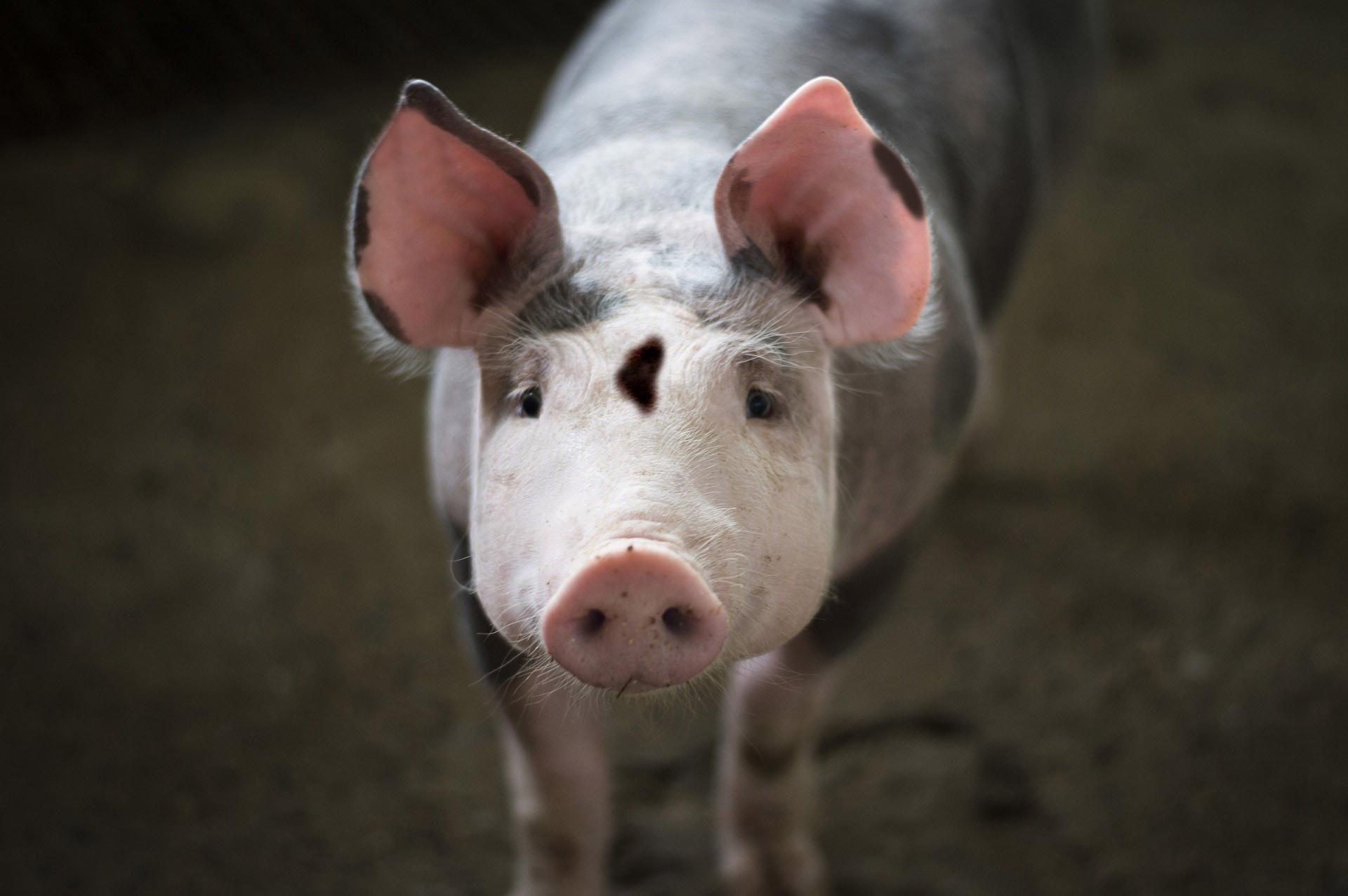
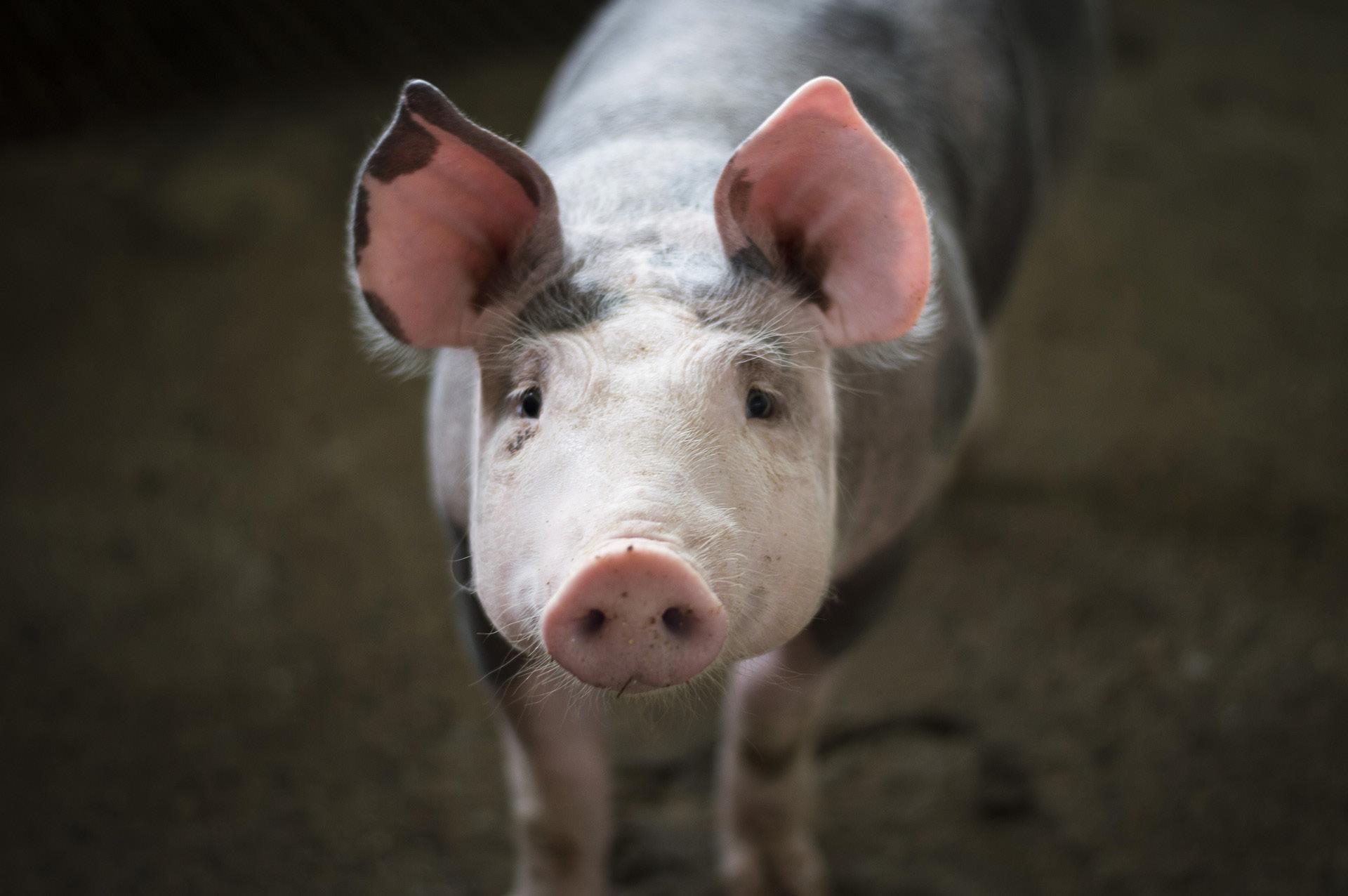
18
Hint: There are 4 of them! FortheKids
Pig Jokes That Are Sure to Make You Laugh
Q:
A: In a hambulance!
The teacher was furious with her son. “Just because you’ve been put in my class, there’s no need to think you can take liberties. You’re a pig.”
The boy said nothing.
“Well! Do you know what a pig is?”
“Yes, Mom,” said the boy. “The offspring of a sow.”
Q:
A: Jurassic Pork
19 New Standard Hog Update 2017
How do you take a sick pig to the hospital?
What do you get if you cross a pig with a dinosaur?
You’re going to increase your barn costs only because of animal welfare pressures
We understand the frustration of being forced to convert to group sow housing because of animal welfare issues, but it is not the only reason you should make the switch. With proper hog pen design and equipment, you will maximize feed efficiency per animal, improve sow health and improve overall performance.
Feeding sows in group housing leads to variation in body condition
Some loose sow housing facilities have run into problems with body condition variation, but this is typically from improper gestation pen design. With electronic sow feeding, properly applied, each pig is able to eat individually without being pressured, which ensures that they receive the appropriate ration and continue to gain weight consistently. You can
also incorporate automatic weight collection to determine if animals are staying within a preset growth curve.
4
Just implementing electronic sow feeders will improve efficiency and sow health
3 5
Dominant sows will force the others away from the feed stations
Even if you install ESF systems, won’t the dominant sows just block the stations and force the others away? Not with the right design. ESF feeders should be designed to always open for any sow whether she has eaten or not. The identification sensors should be inside the feed station, so all sows are let through the gate and no backups occur. If the dominant sow has already eaten and comes back through, no feed will be dispensed for her. Once the system determines she does not have any available ration, she will be sent on her way but upon exit will not be anywhere near the entrance. Once the girls realize there is little value in racing back to the entrance, they soon decide not to bother but lay down instead.
Feeding sows in ESF systems will improve efficiency and sow health, but they must be properly designed if you want to avoid major headaches and increased animal stress. Things like pen size, separation alley width, pen flow, and feed cycles cannot be overlooked when putting together a hog pen design.
Allotting more sows per ESF station will cut costs, therefore increase profits
In theory, this makes sense. More sows per station = lower overhead and maintenance costs per sow. In reality, we should focus on the number of piglets weaned per sow. At a certain point, adding more sows to an ESF station will decrease the number of piglets each sow has due to the stress on the animals. Adding more sows to each station increases your cost of feeding sows without making a significant impact on your total production.
20
2
1
It
harder to keep track of sows

it harder to track, treat, and vaccinate sows
This is a very logical assumption, but group gestation pen technology has advanced to make tracking, treating, and vaccinating sows as easy as it is in gestation stall barns. Auto-sorters are designed into the exit alleys of ESF stations to separate and/or paint the sows you need. For example, if you mark the animals to vaccinate with paint and then missed a few vaccinations in the pen because you didn’t quickly find the missing pigs, you don’t have to waste time searching for them. Simply program the system to sort out the missing sows into the holding pen the next day.
You will always have the weak or smaller animals getting beat up Some farmers have shared stories of the smaller and weaker animals being beat up and even killed in loose housing. This is not a characteristic of group gestation pens, but rather a characteristic of poorly designed pens and feed systems. We have to understand that dominant sows need their space in order to feel comfortable and not attack. Pens with inadequate space for the subordinate sows to move away will result in increased aggression in your pens. Most sow aggression can be avoided with proper pen design.
Group sow gestation can be the most productive system you choose for your
barn, but, and it’s a huge qualifier, the barn design must be done correctly. There are many ways to design and build group housing barns and many try with limited success. Be sure to find a barn design company that has a proven track record.
21 New Standard Hog Update 2017
is
making
6 7
Group Sow Gestation can be the most productive system you choose for your barn, but, and it’s a huge qualifier, the barn design must be done correctly.
By: Keees van Ittersum
TIMELINE OF MAJOR ESF EVENTS

22
1974 - Nedap started with Cattle Systems (Cattle Code) 1983/1984 - Nedap started using cow feedstations for pigs 1992 - First automatic heat detector was introduced 1997 - Porcwin software for PC was developed 1998 - Central separation unit incorporated into hog barn 2000 - Started Leading the sows away from the feeder entrance 2002 - Porcwin computer was built 2006 - Velos cloud based system was introduced 2016 – Nedap introduced sow weighing in the separation alley
Due to both consumer pressures and the need for improved barn efficiency and reduced feed costs, pork producers in North America are moving towards Electronic Sow Feeding in hog barns. Nedap’s automated sow feeding technology has been around since the early 1980s and has since developed into a complete sow management system. Learn more about the evolution of ESF technology from dysfunctional identification collars to fully automated barn management systems.
From Cows to Sows
Before Electronic Sow Feeding systems, livestock identification systems were mainly used in dairy production. The Dutch specialized in these identification systems and decided to test them in swine production. They copied this identification technology over to group sow housing in the early 1980s and developed the first systems using the same strategies and equipment used to keep track of cows. Nedap, who is the ESF industry leader and expert today, built their first system (called Porcode) based on the already developed Cattle Code equipment that they built in 1972. Nedap tested these initial systems on their own test farm of about 150 sows, and they continued using the test farm until the mid-1990s. While these systems do create a better environment for the pigs, they were not originally designed to tackle animal welfare issues. The focus was to move the proven precision farming practices over from dairy farming to be able to provide sows with the exact amount of feed they need to reduce unnecessary feed costs.
Learning Curve in the 1980s
The first phase of Electronic Sow Feeding design was focused on creating reliable equipment and systems. From 1982, when identification systems were first introduced to sows, to 1989, ESF designers faced a steep learning curve. The original systems were undeniably flawed. The major issue with this initial design was that the pigs had to back out of the feed station when they were finished eating, leaving their rear ends exposed as others tried to enter. This led to increased aggression and animal injuries, including damaging vulva bites. This caused a multitude of farrowing complications, increased culling of animals, and a 10-15% higher gilt replacement rate. The back-out design did indeed properly feed the sows, but it had to be tossed due to animal behavior problems. Around 1985, Nedap changed the feed station design to a walk-through system, which never forced a sow to be exposed against her will. The walk-through system is still used today and is the only system that negates sow aggression at the feed station entrance. Another major issue was with the identification neck collars that each sow wore. Unlike cows, pigs’ necks are about the same size (or larger) around as their head, so they were often able to slip the collars off. There was about a 40% collar loss rate with these systems. This created a whole bunch of problems; some sows weren’t being feed and others were being overfed.

The 1990s and 2000s
Development in the 1990s
Towards the end of the 80s and in the early 90s, the systems started to evolve into functional and reliable systems. The collar loss issue was taken care of when ear buttons were introduced in 1989. In 1992, the first automatic sow heat detector was developed, but for the most part, not much happened from 1990 to the late 90s because there was not much demand for the systems. That changed in 1997 when Europe decided to start phasing out stall barns. Consumer driven animal welfare was forcing everyone to become interested in ESF again. European farmers were faced with the challenge of effectively feeding sows in loose housing barns.
In this time frame, the Porcwin software for PCs was developed and central separation units started being incorporated in ESF barn designs. These automated systems were starting to develop into more than just feeding systems with increased sow tracking capabilities and the ability to incorporate other barn functions into the system.
Introduction to North America
While all this movement was happening in Europe, the trend had not caught on yet in North America. The first ESF Barns started being designed in the early 2000s in Canada, but there was no real pressure to convert until 2007. In 2007, both Smithfield and Maple Leaf Foods declared that all their stall barns would be phased out and replaced with group sow housing. With this move, the interest in ESF barns immediately changed. North American producers understood that consumer pressure was starting to require them to redesign their hog barns. Like European farmers in the late 90s, they were challenged with finding feeding and organizational systems that worked well in group sow housing. Again, since these systems were originally built for production efficiency and precision feeding, they were exactly what many producers were looking for. The transition to Electronic Sow Feeding started with the remodeling of existing hog facilities and the building of new barns all over both Canada and the United States, and the transition continues today.
Complete Management System
When these systems were first built, they were designed to simply feed pigs the exact amount they needed in an efficient manner. Over time Electronic Sow Feeding has developed into a complete management system that not only feeds your sows but also tracks important data, automates sorting, weighs each sow, detects when each sow is in heat, and more. With the introduction of the Velos program in 2006, all this data has become cloud based and the systems can be controlled from an onsite computer or monitored from anywhere in the world. When designed and setup properly, ESF barns are extremely efficient and easy to use. The automation has allowed farmers to keep a constant watch on their animals to determine when anything is even the slightest bit off in the barn.
23 New Standard Hog Update 2017
By: Drew Nolan

Tuesday was not just another day in the 5j Design office. Nope, on Tuesday, we had the wonderful opportunity to see what one of our clients does...by taking a tour of a hog barn. Jake and I are the web guys for New Standard, and typically we don’t like to call ourselves city boys. But let’s face it, when in comes to farming and livestock production, we are definitely city boys. Tim and Ben from the New Standard Group were gracious enough to take us where we had never been before.
The morning started with coffee and donuts, just as every good day should. We then hopped in the New Standard Group trucks and started rolling out to one of the hog barns they designed. It was about a 35
minute drive to the farm, just enough time for the four of us to solve all of the world’s problems. We pulled up to the barn, and I thought to myself, “Alright, its go time!” I promised myself I would make it through the tour and be stronger in the end, no matter what I saw or smelled (or how much I smelled afterward). We jumped out of the truck with our boots covered in plastic boot covers and then headed in the doors of the facility. And there were all of the pigs and a smell so strong you couldn’t breathe, right?! Nope, there was nothing but a little room with a folding chair, more plastic boot covers and a coat rack.
Shower In, Shower Out Now, we knew that biosecurity was a big deal at hog barns, but all we
had been told was that we had to “shower in and shower out.” Simple enough, we can do that! So after we put on a second layer of plastic boot covers, we placed everything we needed to bring into the barn into a UV oven before heading through a door to a room with a bench running wall to wall splitting the room in half. There were plastic covered shoes on one side of the bench and a series of doors on the other. We were told that we had to sit on the bench, take our shoes off (not letting our socks touch the ground on one side) and swing around and plant our feet on the opposite side of the bench. Then came the realization, they said we had to shower in...like high school
24
locker room style? Am I about to get to know my boss and the New
“As we got deeper into the barn, I also realized how quiet it was in there. Here we were standing next to thousands of sows, and we could still talk to the person beside us without yelling.”
Standard guys way too well? Not to fear, each of the doors in the room were individual shower lanes.
After we got into our individual shower stalls, we had to strip down on one side of the shower, take a full shower, and exit the other side. For biosecurity reasons, you cannot go back to the other side without re-showering. Once I exited the shower, I toweled off and looked in the cabinet to find underwear and socks. The socks were folded together, so I knew they had to be clean, but the underwear were laying in a pile on the shelf, some semi-folded. These are clean right? I decided to trust the process and just put them on. I then grabbed the biggest pair of coveralls I could find. They were still too small, but I decided to roll with it and rock my high waters. I exited the shower stall confidently, but I must have looked like a fool. Some of the barn staff members giggled when they looked at me and multiple people suggested I try on a more “comfortable” pair. In the end they were right, the bigger size was so much more comfortable.
Sights, Sounds, and Scents of an ESF Barn
Once we were all ready to go, we grabbed our camera equipment and headed towards the barn. We went through yet another door to a room with another full length bench splitting it in half. We had to do the opposite as before and keep our socks on one side and put on rubber boots before touching the other side. We slipped our boots on as we swung over the bench, and we walked over to a door that opened to a long hallway that connected all the barns. As Tim and Ben lead us to the Electronic Sow Feeding (ESF) Barn at the end of the hallway, I was surprised at
how underwhelming the smell was, at least for the time being. We then opened the door to the group sow housing barn and there they were, all of the pigs and all of their odor. But it wasn’t anything like I was expecting. You definitely noticed the smell, but it wasn’t nauseating and it didn’t smell like what you would think manure would smell like. In fact, I can’t even describe what it smelled like, the air was just heavy and strong.
The guys from New Standard guided us through a series of hog gates before we reached the group gestation pens. When a lot of people imagine a hog barn, they imagine each pig being held in tight stalls with barely any room to move. This was not the case. The sows were waddling around in a huge pen with lots of room around them. Many of them were laying next to each other in a large group making them look squished for space, but what I have learned is that sows enjoy laying next to each other because they like each other’s physical touch. I’m not an expert on animal emotions, but it seemed like all of the sows were extremely comfortable and happy. The only aggression I saw was when one sow would stop in the exit lane of the electronic feeding systems and the next one would give her a nudge from behind. Heck, I tend to want to do that when people are in my way too!
As we got deeper into the barn, I also realized how quiet it was in there. Here we were standing next to thousands of sows, and we could still talk to the person beside us without yelling. The only constant squealing from the pigs was when they were being vaccinated. These girls seemed relaxed and were not bothered by us one bit. In fact, when we walked through the
pens, they didn’t even run from us. They simply stood there quietly and gave us little nudges as we moved by them.
After a full tour of the barn, we made our way back down the initial hallway and back to the break room. There we discussed more about the barn operations and what daily work life is like in an ESF Barn. We also got to know the barn managers and their team. They were so down to earth and treated us like we belonged there, even though we clearly did not. We couldn’t have asked for better hosts. They even feed us a full meal (hot stromboli fresh out of the oven) before we took off!
Will We Keep Eating Bacon?
Absolutely! Ever since we toured the barn, Jake and I have heard this question over and over. We assure people that there was nothing we saw that would keep us from eating pork. In fact, I had a pork chop that night for supper. I also have to mention how incredible the barn staff was. They were very gracious to us, and they cared for the animals like their own pets! As an animal lover, that was really cool to see.
This was a great experience learning more about what our client does. But even more, it was an amazing opportunity to see inside an industry that is such a vital part of our local communities and global economies. We want to thank New Standard and the Pig Hill Farm team for allowing us inside their facility and being such great hosts!
25 New Standard Hog Update 2017
Fast Turkey Facts
In 2012, 253,500,000 turkeys were produced in the United States.
The heaviest turkey ever raised was 86 pounds, about the size of a large dog.
Canadians consumed 142 million kgs of turkey in the year 2012, the average American ate 16 pounds of turkey.
Since 1970, turkey production in the United States has increased nearly 110%.
Turkeys have been bred to have white feathers. White feathers have no spots under the skin when plucked.
According to the 2007 Census, there were 8,284 turkey farms in the United States.
200 years ago in England, turkeys were walked to market in herds. They wore booties to protect their feet. Turkeys were also walked to market in the United States. Minnesota is among the top turkey producers they raised 46 million turkeys in 2012.
Gobbling turkeys can be heard a mile away on a quiet day.

How Tunnel Ventilation Has Impacted Turkey Production at Pembrook Colony
In 2015, Harold Hofer of Pembrook Colony in Ipswich, SD was facing a few major challenges with their current turkey barns. In the middle of the summer, when it would reach temperatures over 100 degrees Fahrenheit, and the wind would quit moving in their curtain barns, the internal temperature quickly became too hot. Every year, they were losing birds throughout the summer because they could not regulate the temperature in the barn to cool the birds to a normal temperature.
Harold and the Pembrook staff knew they needed air moving during the hot South Dakota summers, so they decided to start looking for a new system. After doing their research and weighing their options, they decided on building a new tunnel ventilation barn with New Standard Group.
“I met with Tim (at New Standard) and I knew I could trust them more than other barn design companies by looking at the success of their previous barns.”
The new barn took three months to build, and the Pembrook staff quickly saw the changes they were looking for. When asked whether he preferred his two curtain barns or the new tunnel ventilated barn, Harold was quick to assure us that they made the right decision.
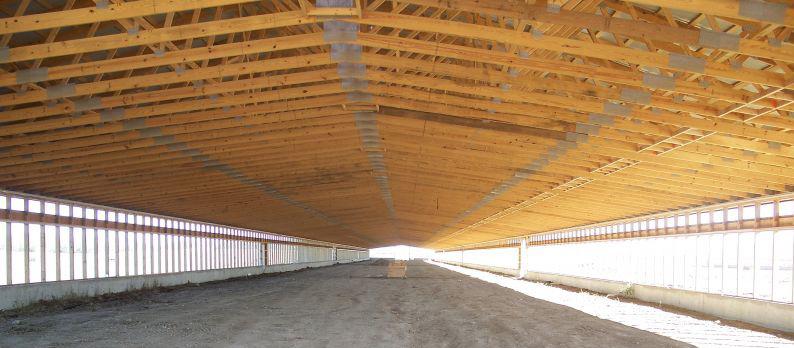
“We decided to try something different and I think the tunnel barn is way better. It’s a lot easier to operate this new barn because I actually have control.”
Impact on Production and Daily Operation
The tunnel ventilation system is quickly paying for itself in Pembrook. When comparing the birds in all three of their barns, on a year average the tunnel-ventilated barn produces birds that are 1.3 pounds heavier than their two curtain barns. The automation in the new barn is also making daily operations much easier for the Pembrook staff.
“Daily, we don’t have to worry about that barn compared to a curtain barn. With a curtain barn, every time the weather changes, you have to go change something. And with a power-ventilated barn, it’s all automated.”
Pembrook’s Future Plans
Pembrook Colony is currently in the middle of constructing a new brooder barn with a New Standard design. This barn will use chimney and ceiling intake ventilation; a barn design well suited to warmer interior temperatures with a great variance in outdoor conditions. With the new brooder, Pembrook can expect to see optimum performance from the moment they place the poults to the day they go to processing.
27 New Standard Hog Update 2017
Pig Jokes That Are Sure to Make You Laugh
Q : Who is the smartest pig in the world?

A : Ein-swine
A city child came running into the farmhouse“No wonder that mama pig is so big” she yelled “Theres a bunch of little pigs out there blowing her up!”
Q: What do you call a pig with three eyes?
A: PiiiG!
28
PANELTIM®

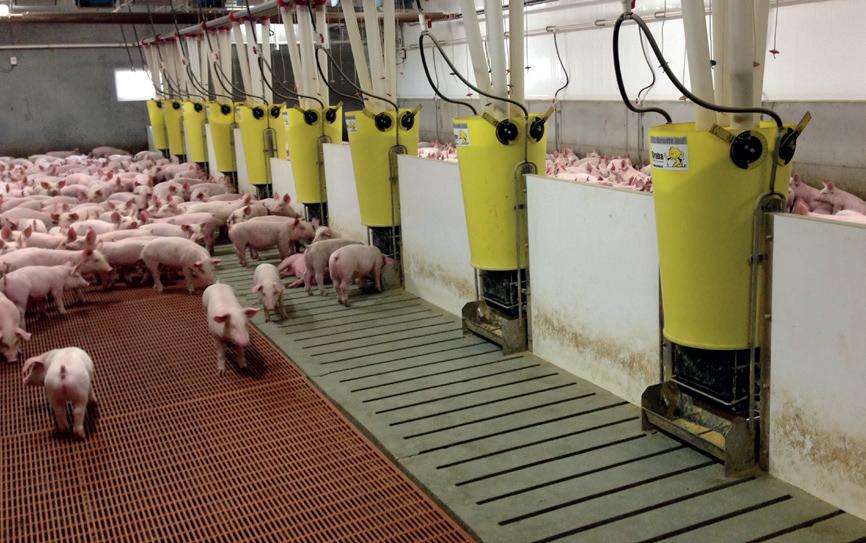


WWW.PANELTIM.COM
Plastic solutions for pig husbandary Closed cells and dense molecular structure guarantee high biosecurity.
ask your ESF salesman the right questions
It’s true, effective group sow housing depends on high quality ESF equipment. But purchasing and installing top of the line equipment does not make your gestation pens instantly efficient and profitable. It goes deeper into the design and support for the system. When talking to an ESF equipment supplier, make sure to ask the following questions.
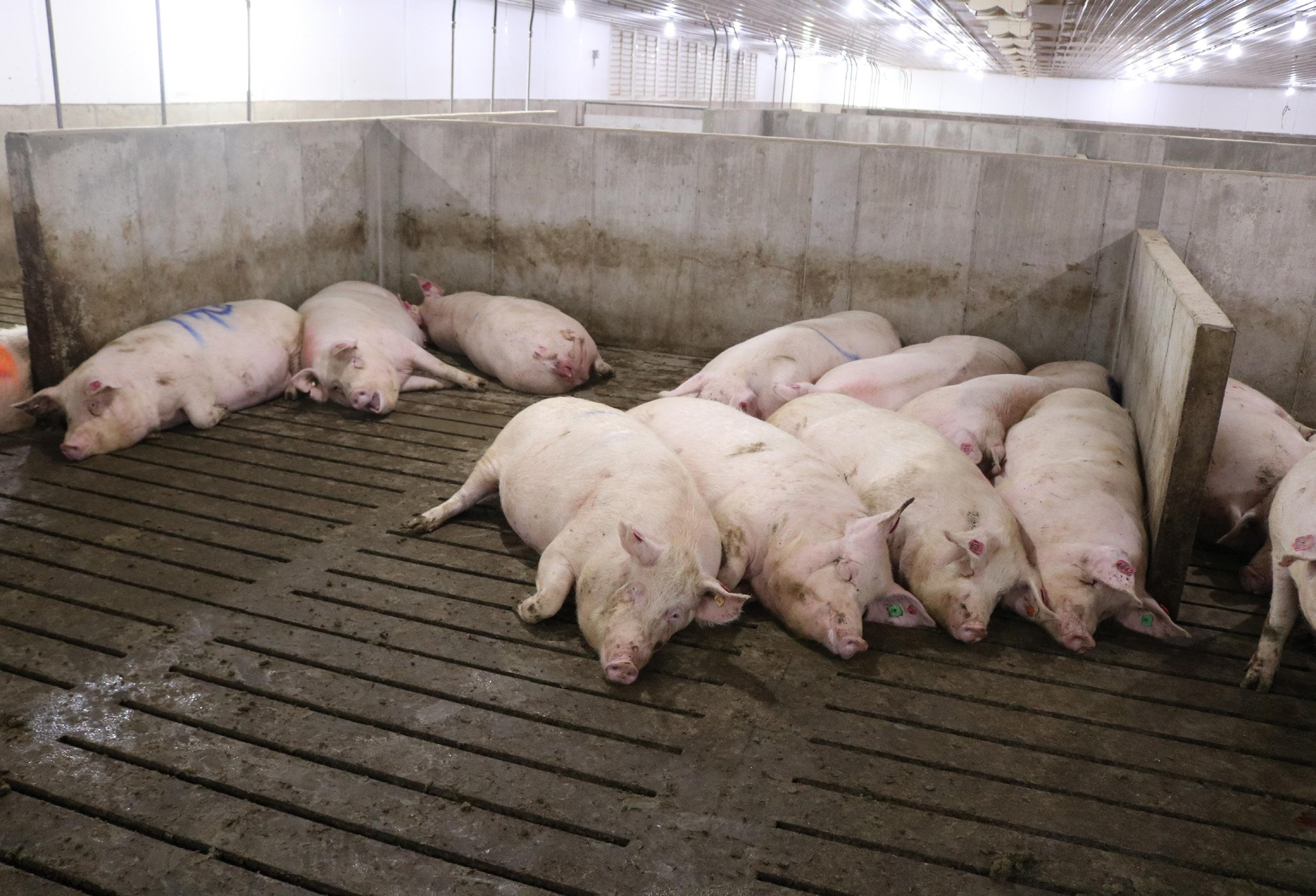
What does your training and support program look like?
The sale of the equipment should never be the end of the relationship between you and your equipment company. Outside of gestation pen design, training your staff and your animals on how to use the equipment and pen is the most important step in transitioning to loose housing. Make sure the company has a thorough training program that doesn't leave you hanging.
Along with training, you should expect intentional tech support for the life of the equipment and the barn. Long periods of down time can wreak havoc on your operations, so it is vital you have a support team ready to diagnose problems and provide solutions to get you back up and running. Make sure your equipment company can respond quickly and provide you with in-depth technical support.
30
Asking questions will give you tidbits of insight that are vital to making your equipment supplier decision ”
“
By: Tim Kurbis
Can I talk to 5-10 of your current customers?

Asking this question will give you a couple tidbits of insight that are vital to making your equipment supplier decision. First, it will tell you if they are confident in their systems depending on how they react. Second, you will be able to get more insight from other producers running the ESF system. You can get a wider view of the system including its advantages and its drawbacks.
Talking to past customers who have been through the process will also help you discover whether you are ready to handle the conversion or if you need to do a little more prep work.
Do you have a network of previous barns we can have access to once we are up and running?
Your supplier shouldn’t have any trouble with you connecting with others running the system, but the strong companies will have a network of barns dialed up for you to contact. Each team is unique and manages their barn a bit differently. When each barn has a strong connection to the network of other barns, they can share what is working well for them and learn what is working well for others. This helps the entire network become stronger and more productive. It also allows your equipment company to learn from current operations and develop better technologies to implement into current and future barns.
What failures have you had with your system?
If your ESF salesman has the right intentions, he or she will be open and honest about the history of their company including their successes and their failures. The important thing to note in their response is how they approach the question. Do they pass the blame onto the barn builders and individual producers? Or do they take ownership of past failures and explain what they have learned from previous barns?
What To Listen For
Listen to how salesmen promote their system. If they are focusing completely on the equipment, they are likely taking the wrong approach to electronic sow feeding. Again, quality and durable equipment is part of a great ESF system, but the best salesmen will explain the design of the entire group gestation pen rather than focus on equipment alone. They will show you how the entire pen should be laid out to reduce animal stress, increase efficient animal flow, and eliminate complications.
Loose sow housing has had some negative publicity in the past. Barns have been built with poor design because they have focused completely on ESF equipment as the solution rather than the entire system design.
The bottom line is, don’t get caught up just in the quality and features of the equipment; take your time and look at the entire pen design, the company’s training and support system, and their attention to detail.
31 New Standard Hog Update 2017
5 Quick Tips for Choosing Hog Pen Panels for Your Barn
1Install hog pen panels that are easy on your staff
When choosing paneling and gating for your swine barn, make sure it easy to work with. If the panels and gates are heavy or are designed poorly, working in your barn will be a frustrating and, at times, dangerous experience. Before putting your hog barn design or your pen plans together, consult your staff on how they would prefer your paneling and gating to operate.

2Choose the best plastic panel for biosecurity
There are a multitude of biosecurity threats to your swine barn that you have to pay attention to. Make it one less to think about by installing hog penning that reduces the risk of infection and disease. PVC hog pen panels are extruded so they have long open channels that can trap manure inside. This manure will stay inside for the life of the panel and become a fly and mouse haven.
Well-designed polypropylene panels will be built using internal cells rather than long tubes that run all the way
32
Looking to replace your current hog pen panels or put together a new hog barn design? You have some decisions to make! Take a look at these quick tips to help you through the decision making process.
through the panel. The cellular structure ensures that the interior of the panel is always closed, and dirt and manure are not allowed to enter and travel through the panel.
3Make sure your panels are easy to clean
Your hog penning should be easy to clean for both biosecurity reasons and cleaning efficiency. PVC plastic is of a loose molecular structure so bacteria and viruses can be embedded in the panel. And no matter how much you try to power wash them, diseases will lock in which will infect your pigs as they rub past.
Polypropylene on the other hand is a food grade plastic that has a tight molecular structure that pathogens cannot penetrate. This tight molecular structure makes the panels much easier to wash, and they will be disease free when washed.
conditions but will maintain its strength and rigidity at much higher temperatures.
5Beware of lesser options
In most swine barn applications, polypropylene panels are the best choice for durability, cleanliness and versatility. Even within that plastic group however, your choices are many and ever increasing.

There are two things to watch for when analyzing your options on polypropylene panels; the overall amount of plastic in the panel and the quality of the plastic itself.
The wall thickness and chamber size within a polypropylene panel can greatly impact the strength of the panel overall. A very easy measure to compare equal looking panels is to compare the weight of the different options. The weight comparison will quickly show which piece is the better option for strength.
4Compare how easily panels shatter
There is no denying that pigs are massive and forceful animals. They are naturally hard on your materials and equipment, so it is valuable to know how easily different paneling materials shatter. If you buy a cheaper, weaker product, you will have to replace your hog pen panels more often, making it a more expensive option than the more expensive durable panels. In addition, when some materials shatter, they become sharp and can injure your animals before you are able to fix the panel.
All plastics can be broken if enough force is applied but every plastic has its own characteristics and operating temperatures. PVC is a naturally more brittle plastic and is prone to shattering at almost any operating temperature. Polyethylene is a great cold weather plastic and will have to be well below freezing before it becomes brittle enough to shatter, but polyethylene will start to get soft and flexible at a lower temperature. Polypropylene will get a bit more brittle at cooler temperatures and may not be the best at subzero
Plastic quality is also very critical. The two most prevalent options are: “near to prime virgin material” or “recycled material”. Virgin material will always be a bit stronger as it won’t be subject to impurities. Recycled material can and is used, but when choosing the recycled option, opt for a pure and consistent color that isn’t black. Greens, blues and grays are good options, but if the panel is black and is recycled plastic, it is likely a combination from a lot of sources and is more prone to inconsistencies.
33 New Standard Hog Update 2017
BLT Recipes for
The Fried Green Tomato BLT
Fried green tomatoes can be somewhat of a mystery. Some claim that the popular Southern comfort food is made with unripe red tomatoes - others use actual green tomatoes, which can be a little harder to find. Either way, a tomato is a tomato - and tomatoes go great with bacon!
To make this dish, you’ll need:
4 large green tomatoes
2 eggs
1/2 cup milk
1 cup flour
1/2 cup cornmeal
1/2 cup bread crumbs
2 teaspoons coarse salt
1/4 teaspoon black pepper (ground)

1 quart of vegetable oil for the frying
AND OF COURSE:
toast, bacon, lettuce, and mayonnaise.
Slice the tomatoes anywhere from 1/4 to 1/2 inch thick. Or just eyeball it, we’re not picky. Whisk the eggs and milk together, and scoop the flour onto a plate. Mix the cornmeal, breadcrumbs, salt, and pepper on another plate. Dip tomatoes into the flour to coat them, and then dip into the milk and egg mixture. Dredge in the breadcrumbs to completely coat.
In a large skillet, pour vegetable oil and heat on medium. Place tomatoes into the frying pan, just make sure they’re not touching each other. When the tomatoes are browned, flip them and fry the other side. Drain them on paper towels and preferably wait for them to cool before adding to your BLT. If you burn your tongue, you won’t taste the savory sandwich, just burnt taste buds.
BLT Macaroni Salad
Macaroni salad is a picnic staple anyways - why not combine it with some bacon!
What you’ll need:
1 pound elbow macaroni
1 cup mayonnaise
1 teaspoon garlic powder
1 teaspoon salt
1/2 teaspoon black pepper
8 slices of bacon, cooked and crumbled
1 cup cherry tomatoes, cut in half
1 1/2 cups coarsely chopped baby spinach
Cook the macaroni, drain, and let it cool. Combine the mayonnaise, garlic, salt and pepper first - then add pasta and remaining ingredients, mix well, cover, and refrigerate until you’re ready to leave for the picnic!
BLT Salad in a Jar
This one is ridiculously easy. Find a jar, or a mug, or a cup, whatever you want. This is what you’ll need:
Bacon
Tomatoes
Lettuce
Croutons (however many you prefer)
1/4 cup mayonnaise
1/2 tablespoon salt
We could have given you exact measurements for each ingredient, but honestly, this recipe is all yours.
If you like more bacon than tomato on your BLT, we don’t blame you. Just add more bacon to your jar. The entire recipe includes throwing mayonnaise, chopped lettuce, chopped tomatoes or halved cherry tomatoes, some crumbled cooked bacon, maybe a few croutons and some seasoning if you like, into a jar and shaking it up. Easy to transport, easy to eat.
Your Next Picnic
BLT Pizza

Who doesn’t love pizza? To make a BLT pizza, this is what you’ll need:
However many prepared or homemade pizza crusts you’d like
1/2 cup of mayonnaise or salad dressing per pizza
Basil, garlic powder, onion powder to taste
12 slices of bacon per pizza
1 1/2 cups of cheese (cheddar, mozzarella, Monterrey Jack, whatever’s your favorite)
1 1/2 cups lettuce (for the topping)
2 tomatoes, thinly sliced
In a bowl, combine the mayonnaise and all your seasonings. Refrigerate this for at least a half hour or more. Use an ungreased pizza pan and spread the mayonnaise mixture over the crust. Set aside 1/4 cup of bacon for later, and sprinkle the rest along with the cheese on the crust. Bake at 425 degrees F for 8 to 12 minutes or until the cheese is melted.
Once the crust is done, top with the lettuce, tomato, and the rest of the bacon.
BLT Wraps
Wraps are always an easy favorite. You can find them at restaurants, fast and sit down, you can find them in school and hospital cafeterias, and at your next picnic.
For this recipe, you’ll need:

10 slices of bacon, cooked and crumbled
1 cup of grape tomatoes, quartered Salt and pepper to taste 2 cups of shredded lettuce 4 burrito sized tortillas 3 ounces of cream cheese, softened 1 tablespoon mayo 1 tablespoon Dijon mustard
In separate bowls combine the grape tomatoes with your seasoning and the softened cream cheese with the mayo and Dijon mustard. Combine everything in a large bowl and then divide the mixture among the tortillas. Roll up your wrap and you’re done!
estock management
Step forward for calm group pens
When choosing a feeding system for your new or remodeled sow barn, look at the options from all points of view. Walk-in/back-out stalls might look easy to you. But how do they look from your sows’ perspective? Would you want to back away from the dinner table through a hungry crowd trying to take your place? Or would you prefer to walk away from the crowd and find a place to nap?
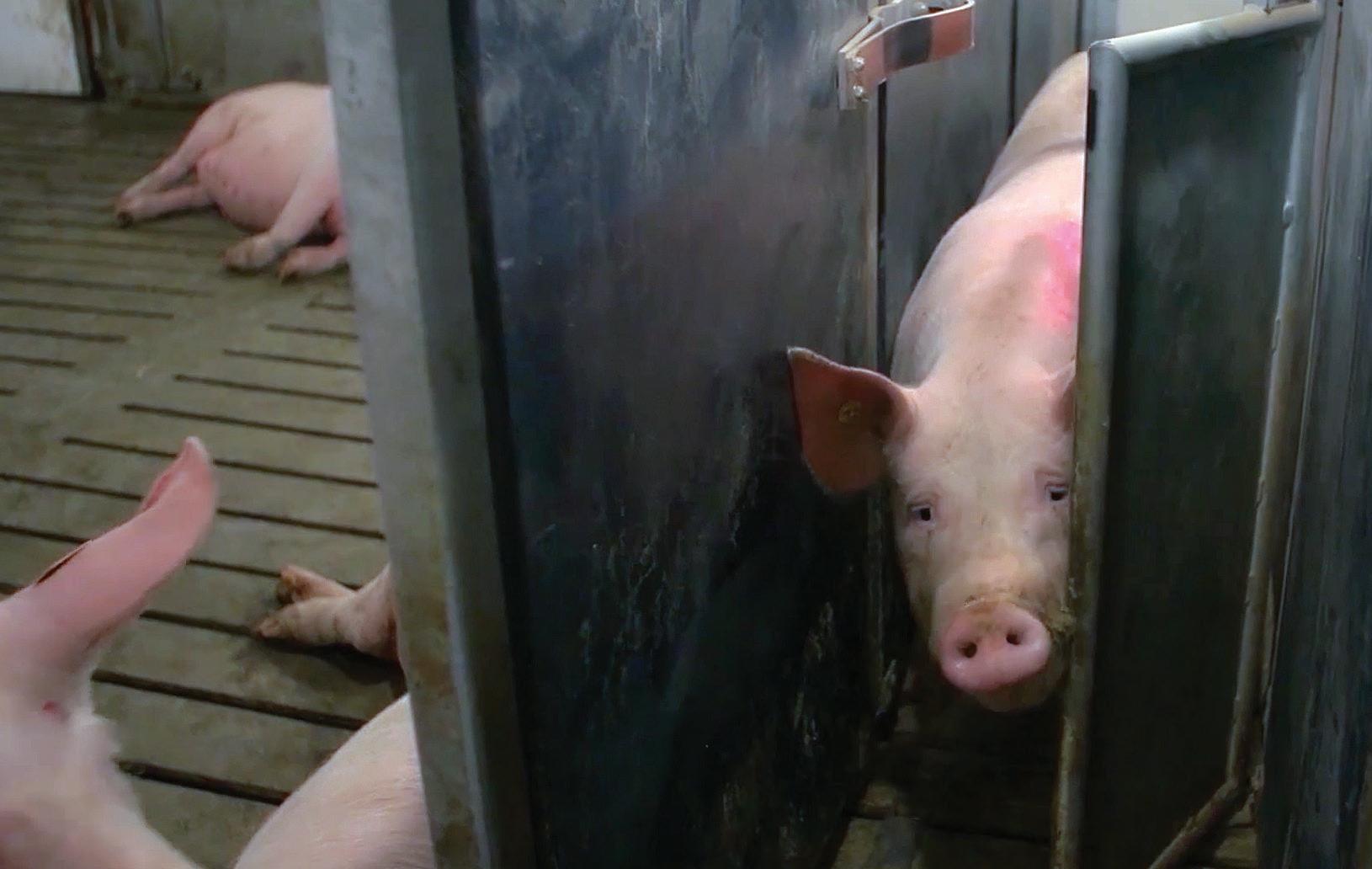
At Nedap Livestock Management, we think minimizing congestion at the feeder entrance is a key to calm, productive groups, and we think your sows would agree. That’s why the feeders in our automated management systems are designed with front exits to encourage one-way traffic through pens.
We didn’t come up with this design by chance. We were a pioneer in precision sow feeding, and our first feeder had a combined entrance and exit. However, we saw how this design intensified sow aggression because sows clashed while trying to get into or out of feeders. We also saw how dominant sows guarded the feeder if given the chance. 1982
LEADING THE WAY IN AUTOMATED ANIMAL MANAGEMENT
First use of RFID technology for dairy cows 1974 1982
Automated heat detection for sows 1992
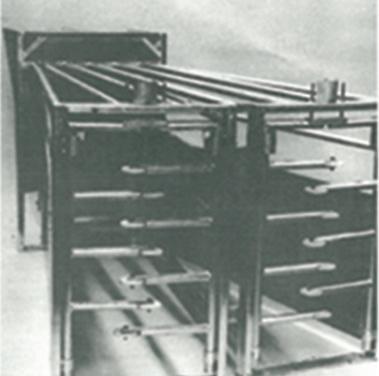

Porcode Electronic Sow Feeder (ESF)
Sow feeding software program able to alert producers via text or email when a sow needs attention 2008
1998 Central separation for sows
2011
Pig sorting technology for grow/finish operations
Pig performance testing for automated data collection 2012 2014 Farrowing feeding system
Weight monitoring option for the ESF system 2017
36
l i v
Today
At Nedap, we put the sow’s needs first when we designed our electric sow feeding system. When a sow enters a Nedap feeder, the gate locks behind her. She can’t be touched or disturbed while she’s eating, so she doesn’t feel the need to choke down or guard her feed. When she’s done, she exits the feeder from the front –away from the group – and returns to the pen without interacting with sows waiting to eat.

The only way the sow can get back to the feeder entrance is to take a horseshoe-shaped lap around the pen. This walk could take 5 minutes or longer, especially if she stops to get a drink or linger by the boar in his pen with automated heat detection. With a full belly and no urge to guard her feed, the sow is likely to find a place to lie down and digest her meal, forgetting about the feeder until she’s hungry again.
Meanwhile, another sow will have entered the feeder behind her, keeping the flow moving at a steady pace, no matter the time of day.
When choosing a feeding and management system for your new or remodeled sow barn, be sure to think about what’s best for your sows. If you choose a system that lets your sows move and eat without conflict, you will be rewarded with sows that are calm, comfortable and more productive.
NEDAP ELECTRONIC SOW FEEDING –THE BENEFITS

• Designed with sows’ needs in mind and with more than 35 years of sow management experience
• Forward exit eliminates conflict at feeder entrance
• Sows are relaxed and eat without interruption
• Pen design eliminates dominant sows’ drive to guard feed source
• Can be combined with other Nedap solutions as part of a complete barn-management system
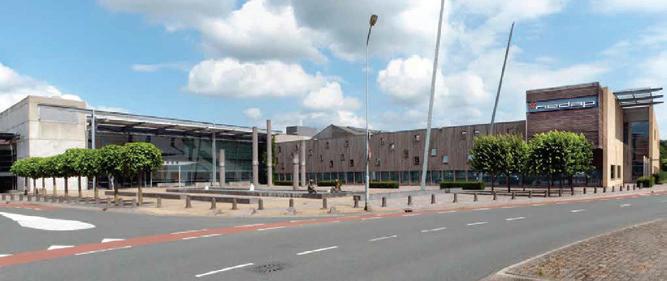

Thank you, New Standard Group, for being a valued partner.
MEET OUR TEAM
Nedap Livestock Management



401 Edgewater Place Wake eld MA 01880 USA
Nedap Livestock Management 401 Edgewater Place Wakefield MA 01880 USA
T (712) 435 7546
T (712) 435 7546
E livestock-us@nedap com
E livestock-us@nedap.com
twitter.com/NedapLivestock facebook.com/NedapLivestockManagement youtube.com/user/NedapLM nedap-livestockmanagement.com/pig-farming
twitter com/NedapLivestock facebook.com/NedapLivestockManagement youtube com/user/NedapLM nedap com/livestockmanagement
For more information visit nedap-livestockmanagement.com/ pig-farming
37 New Standard Hog Update 2017
BEST FOR THE SOW IS BEST FOR HER PRODUCTIVITY
WHAT’S
Rich Lepper Application Manager
Tim Shanks IT/Project Manager
Brad Carson Vice President Nedap Livestock Management USA
Robert Drew Sales Manager USA
Rene Weernink Sales Manager Canada
North American Livestock Management Sales & Support Team
l i v estock management
Everything
You Need to Know Before a Sow Housing Remodel
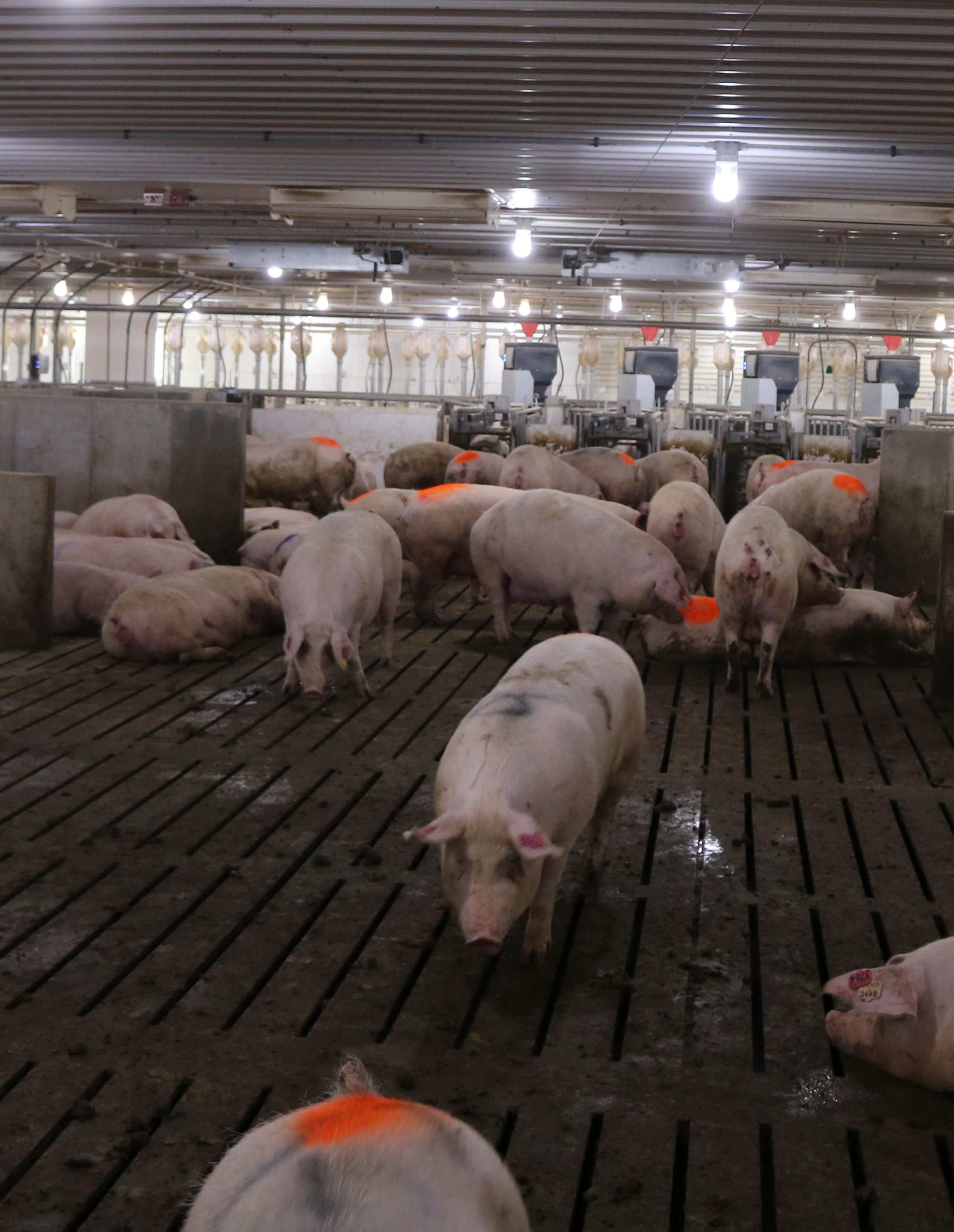 By: Kevin Kurbis
By: Kevin Kurbis
Making the decision to remodel your existing sow housing barn may seem daunting. You will have to restructure your barn, buy new equipment, and train your pigs and barn staff on the new processes. We assure you that with the proper planning, the transition is seamless and making this decision is worth your time and investment.
Preparing for Your Sow Housing Remodel
When preparing for a sow housing remodel, planning ahead is key. It is essential that all equipment, parts, tradespeople, and other major pieces of the building are decided on and arranged to be available before construction begins. This includes doing a full review of the entire area that will be converted and deciding if any other changes or upgrades will be made while the barn is being renovated. These changes may include ventilation and lighting upgrades or even deciding whether or not to paint while the barn is empty. Planning ahead will ensure that the project will progress smoothly without any major delays.
The biggest factor that we have to consider is where we will put the animals while the conversion is taking place. There are a few options available. If possible, an alternate barn (rental or another available facility) is the perfect place to house the sows during your barn conversion. If one of these facilities is not available, it is possible to downsize the herd in order to open up some space in the barn for crews to work in. Whether you use an alternate facility or downsize will be dependent on the size, location, and health status of the herd.
Converting Your Sow Barn
One of the major concerns we hear before a sow housing remodel is that farmers will have to lose space and inventory in order to accommodate the new equipment and design. However, the reality is that it is often possible to convert to a loose housing barn without losing any animal spaces or inventory. In a worst case scenario, the herd would shrink by 5-10%, but your actual production will remain unchanged or increase as sows in a proper loose housing barn will have more piglets than the same sows in a stall barn.
It may comfort you to know the existing floor layout, even in partially slatted sow barns, will be able to be used in a loose housing barn. Typically, only a minimal amount of pit work needs to be done to achieve the desired floor plan. Depending on the style and condition of the slats that are in place, they may not have to be touched at all. Since having the proper slats in place becomes very important when you house sows in groups (avoiding foot and leg issues), this is not an item that can be overlooked.
If everything is planned properly, the conversion can be completed within 5-6 weeks. This is the case for any phase or room; the size does not typically change the time-
frame. This is due to the progression of the work that needs to be done, and the required sequential steps. (ie. waiting for concrete to cure before progressing further)
Training the Animals and Barn Staff
The training of the animals and your barn staff is the final and one of the most important steps. Well-educated and trained employees will make your newly renovated barn operations run smoothly and efficiently. Training the pigs is quite simple. They will be trained using self-training pens, which are often where the sows are housed during construction. In these self-training pens, the sows’ natural curiosity will allow them to become comfortable with the new equipment and processes. This training will only take a few weeks, and then your loose housing barn will bring comfort to your pigs and efficiency to your processes, which will lead to higher production and profits.
39 New Standard Hog Update 2017
By: Kevin Kurbis
Group Sow Housing Barn Highlight Eagle Creek Colony
As it enters its 10th year of operation, we would like to highlight the building that set the group sow housing industry standard, the Eagle Creek Colony electronic sow feeding facility. The Eagle Creek barn is a 1,000 sow farrow to finish site located near Altamont, MB. It was designed using large-pen gestation and Nedap equipment and the year-to-year annual weaning in the facility is nearly 32 pigs/sow/ year, which is above most conventional systems. It is a fully dynamic building with central separation. New Standard started designing the building in January 2007, and later began construction in April. The first animals were introduced to the barn in April 2008. The finisher barn was later completed in 2010.
Becoming the Designer of Choice
Originally, we were in competition for designing the sow barn as a stall barn when Smithfield and then Maple Leaf made announcements that they would be converting all of their barns to loose housing by 2017. This prompted the management at Evergreen,
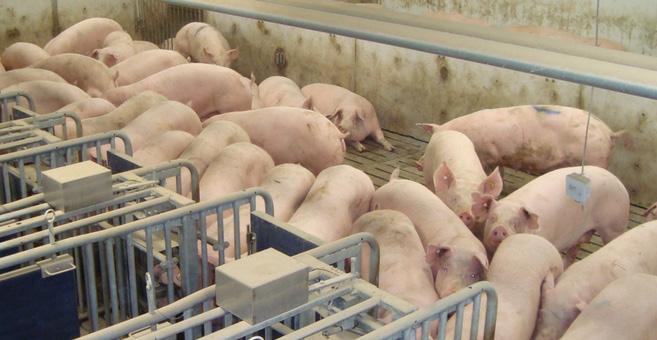
the parent colony of Eagle Creek, to ask us our thoughts on loose housing. We were immediately able to answer their questions and concerns and explain how we not only knew how to build these facilities properly, but also had previous experience with them. We quickly became their designer of choice.
Hog Barn Design and Build
When the project first began, we worked with the colony to finalize the design. In the design process, we not only considered the animals' movement throughout the barn, but also the location of each service and how the workers would be able to most efficiently use the barn. We had several meetings with the hog barn workers, the electrician, the plumber, and the carpenter in order to incorporate everyone’s ideas and improve efficiency in every aspect of the design. While we take the time to think about efficiency, we also mediate meetings to make sure we are productive and keep the project moving forward. In our design, we provided the layout for the loose hous-
40
ing section of the barn as well as the rest of the animal areas. New Standard also designed and supplied the ventilation, heating, flooring, and feeding systems.
After the design was complete, we assisted with and oversaw installation of the equipment, ensuring that all of the areas were completed in the way that they were intended to be. We then also commissioned the entire barn; we were there when it was all powered up and went through each room to make sure that all the equipment functioned properly and the barn was ready to use. As Eagle Creek brought in the first animals, we assisted them with training both the staff and the animals, and we continued with follow up visits until they were comfortable with the operation of the entire facility.
Technology in the Loose Housing Barn
At New Standard, we are committed to using up-todate technology in order to increase efficiency in each group housing barn. In the Eagle Creek loose housing facility, we used Nedap Electronic Sow Feeding systems. The ventilation systems we implemented are controlled by Microfan, and they incorporate chimney ventilation with Dynamic Air (measuring fan) using EMI motors. For nursery feeding, we used a Caras feeder and Falcon
chain disk feed delivery systems. In the finisher barn, we included an autosort finisher with central feed delivery using the Falcon 102mm chain disk.
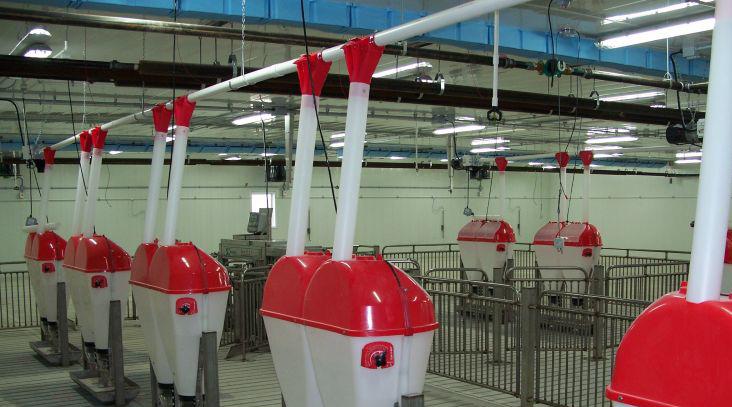
Updates and Success of the Building
To this point, Eagle Creek has not needed to make any major changes to the layout or equipment of the facility. The largest change we made was when we later went back to install pre-training gates for the gilts, which completely removed the need for staff to manually train gilts. . Other than this update, the barn is still being used as designed. The ESF system has been kept up to date through software updates only. These have been provided at no cost, which is normal for this system.
The production of the Eagle Creek hog barn has been at or above expectations since they started and remains at the top of benchmarking. Within the first few years of operation, they had visitors through the barn from every continent (except Antarctica) and are still called upon today for tours of the facility. The design of the barn has been recognized as being a global leader in quality and incorporation of technology. The success of the barn in the long term is also directly tied to the quality of management at Eagle Creek.

41 New Standard Hog Update 2017
“The production of the Eagle Creek hog barn has been at or above expectations since they started and remains at the top of benchmarking.”
PANELTIM®
20 YEARS OF QUALITY
More than ever, PANELTIM is quality! Producing innovative and ecological plastic sandwich panels since 1997.

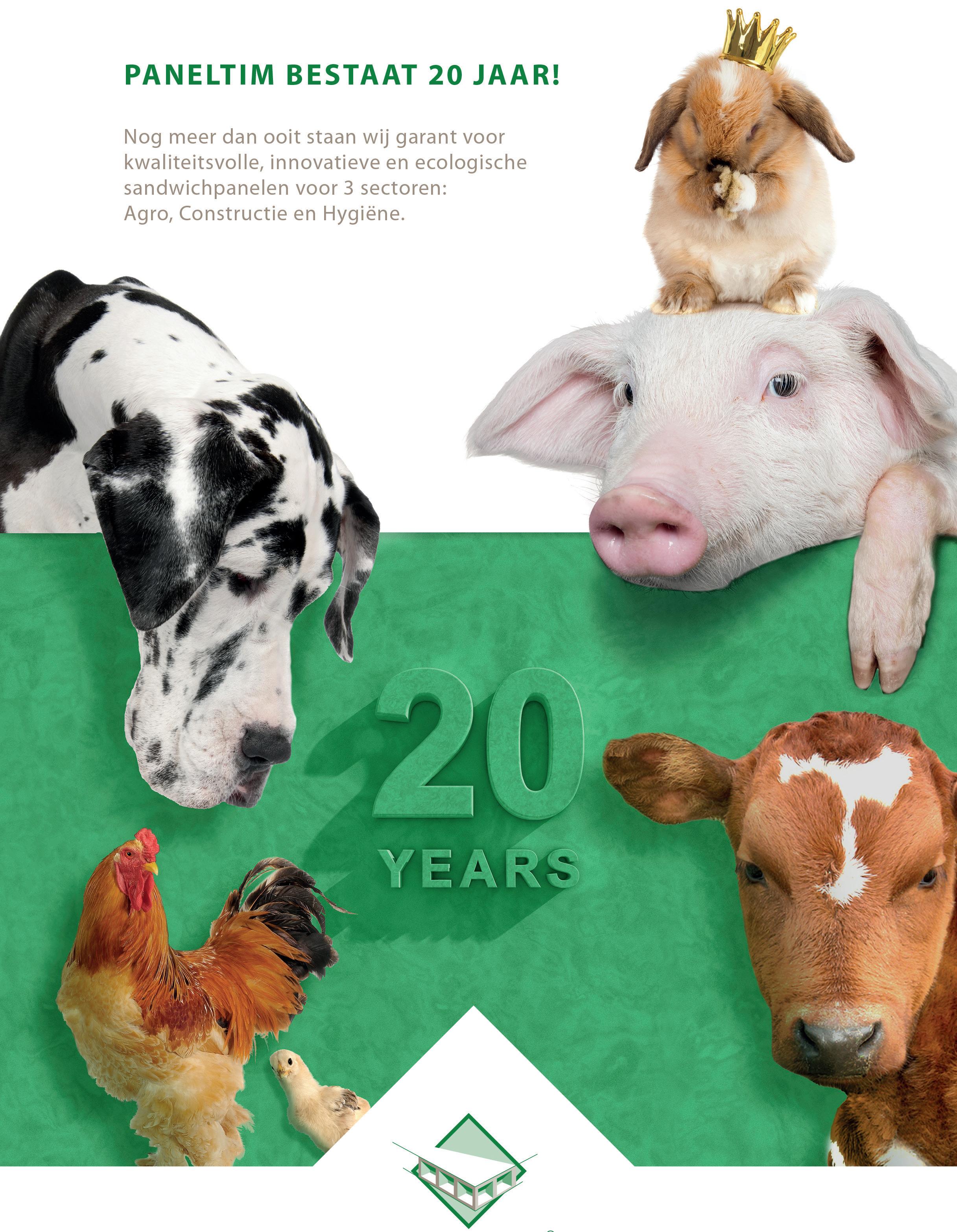
WWW.PANELTIM.COM
Distributed in North America by:
GROUP
PRETZEL BREADED TURKEY
Pretzel-Breaded (Wild) Turkey
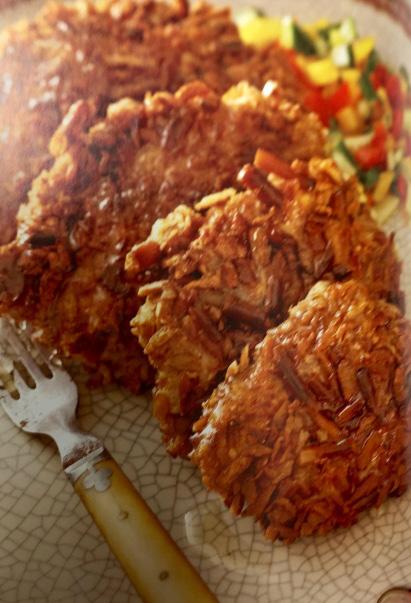
1 cup (125g) flour
4 eggs, beaten
1 cup (235 ml) chopped pretzels
1 pound (450 g) wild or store-bought turkey breast, sliced about 1/4-inch (6.3 mm) thick

1 tablespoon (15 ml) vegetable oil
Salt and pepper
1 tablespoon (14 g) butter
1 tablespoon (15 ml) honey









Put flour, eggs, and chopped pretzels in separate bowls. First, coat the turkey slices in flour, then the egg, and finally the pretzels. Heat oil and butter in 12-inch (30 cm) frying pan. Gently place breaded turkey slices in pan. Reduce heat to low. Cook about 2 minutes on each side, until golden brown.
Remove from pan, drain on paper towels, and season with salt and pepper. Garnish with thin streams of honey and serve immediately.
43 New Standard Hog Update 2017
group sow housing case study
the challenge
In 2012, Thomas Livestock was in the planning phase for building a new 5500 head sow barn. The team planned on simply going with traditional gestation stalls since that is what they had in their current operations. They had never experienced a group sow housing design that reduced stress among sows and had production numbers as high as stall barns. Thomas Livestock’s General Manager Tim Friedel had plenty of experience with group gestation pens, but every design he had managed or experienced was more stressful on the sow. Every time he had tried to mix animals, it resulted in a high level of fighting. The team was concerned with animal welfare in their barns and the ability to implement technology in their operations down the road. They were still open to group housing, but they had not yet found a viable solution.
Before settling on a gestation stall barn design, they decided to see how successful current group housing designs were, and they started traveling around the U.S. visiting different barns with different group housing systems. On these trips, they didn’t come up with anything they were interested in, so they were just going to stick with their gestation stall plans.
the solution
As the team got deeper into planning, they received a call from a friend that suggested they tour a newly built group housing and electronic sow feeding barn that was designed by the New Standard Group. They agreed to tour the barn, and as they went through the system, which had been installed that year, they were impressed with the design. It answered a lot of their questions and eased the reservations they had with most loose housing systems.
With a New Standard Group gestation pen design, they saw that there was less stress on the animals. There was a noticeable difference in each sow and how she behaved; she was relaxed and calm. This was the first barn that Tim thought there was a real opportunity to actually reduce stress on sows.
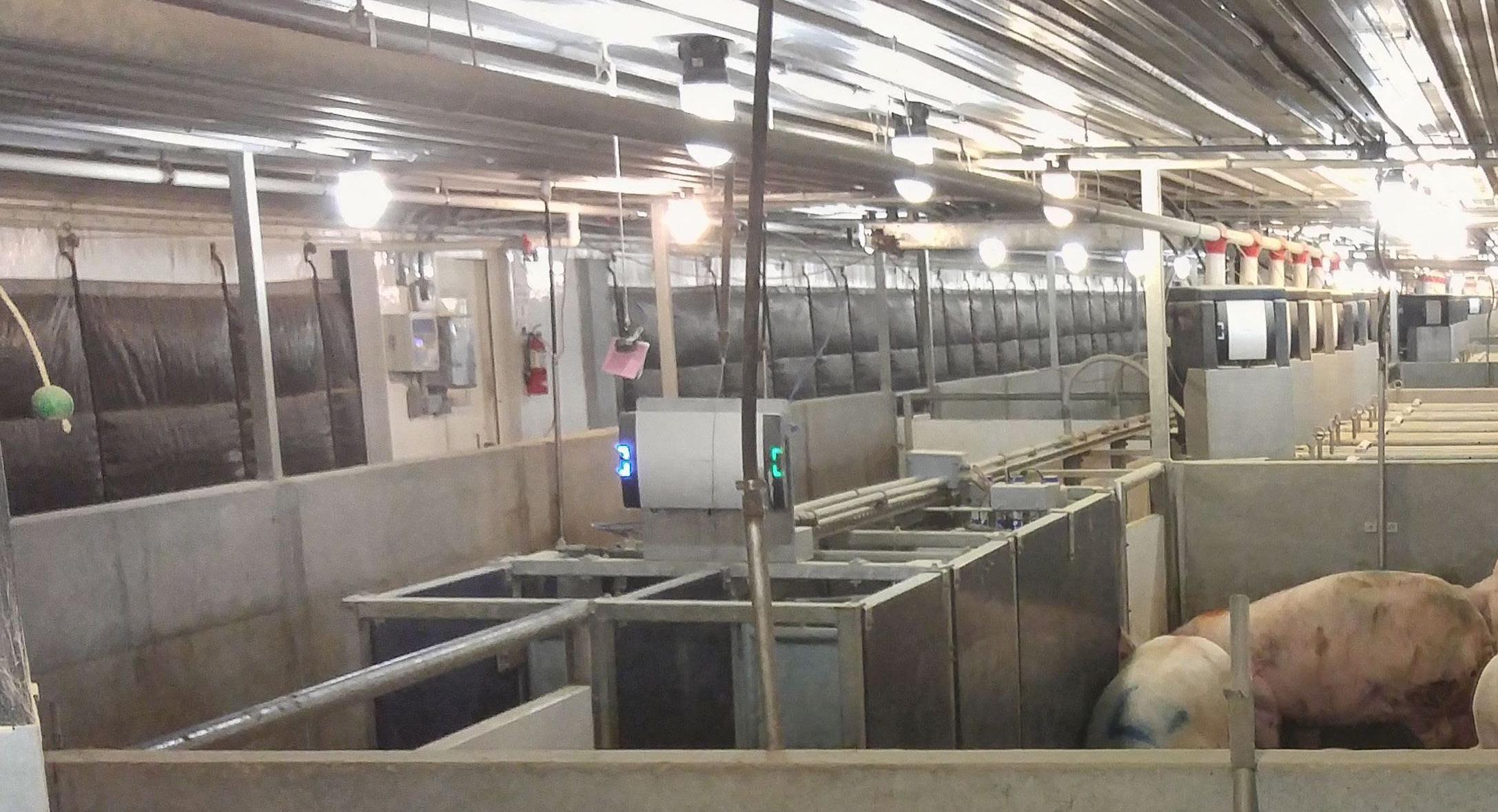
“In all other group housing barns, I felt like I saw more stress factors, a little more lameness, a little bit higher sow mortality and lower farrowing rates and conception rates. I didn’t see that really good productivity coming out, and to me that is a very key factor. It’s hard to have a really productive farm with stress.”
- Tim Friedel, General Manager
Tim believed that if the system works for one person, it should work for him if Thomas Livestock could adapt to the best practices of this group housing system. Even though they were not interested in group housing at the time, the system sold itself and they made the decision to go ahead and do a full 360 and change their barn plans to a New Standard Group group sow housing design.
44
the results
When it comes to conception, farrowing, weaning, lameness, and mortality, all the numbers in their group sow housing barns are within the margin of error. Productivity in their loose housing and stall barns, including the first year of operation, has been almost identical.

Building the group housing barn cost Thomas Livestock about 5% more than a traditional stall barn. When asked whether increased production can make up for the extra 5%, Tim will tell you they believe from a productivity standpoint, they are still learning daily how to manage the building to the best of their ability, so there is more room for improvement. Where they strongly believe they will return the value is in the future. They plan on operating these barns for 40 years, and they feel that New Standard’s design and equipment is the best suited for adapting to future technologies, things they are doing research on today.
“We’re starting to really look into cameras and different things that we can do with the Electronic Sow Feeders, and I think there’s going to be a big payback in the future. To me, that’s where it’s worth the 5% investment. I have a barn now that will really adapt.”
-Tim Friedel
Thomas Livestock has tours through their barns every week through the summer. On every tour, they hear comments from their guests that they feel like this is truly better for the sow.
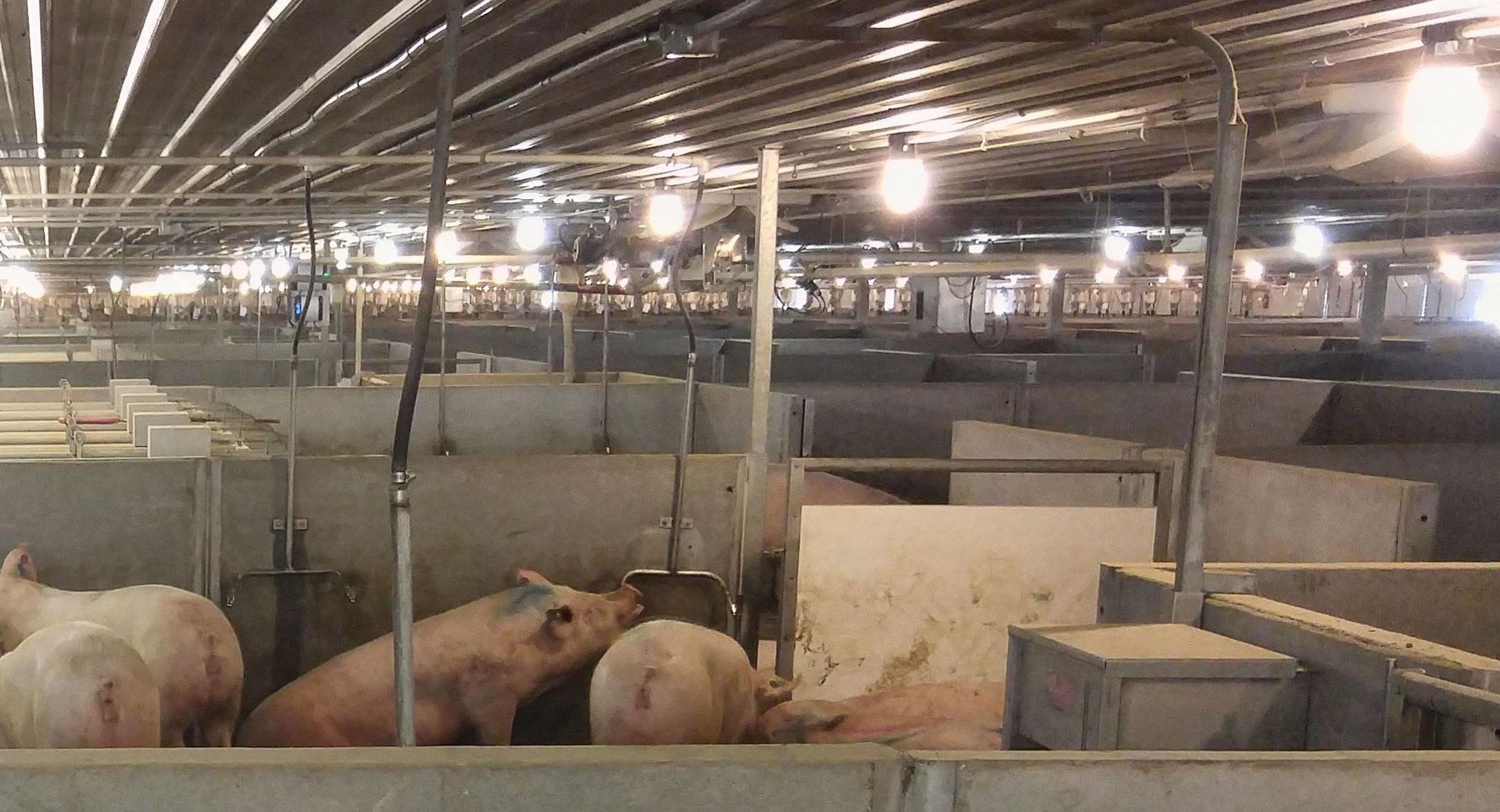
“It’s just human nature. If you look at them, you say well yeah I mean they’re better off here than they were in a crate. Really, it’s the first group housing system that I’ve seen personally that I believe actually reduces the stress as it relates to a crate....I’m eating my words now as I’m explaining to other producers why this system is better.”
-Tim Friedel
Thomas Livestock has now converted all of their sow barns to a New Standard Group design except their oldest barn, which will still be crated for a few more years. In the meantime, they have plans of building a brand new ESF barn to replace this barn.
45 New Standard Hog Update 2017
What is the Future of the Pork Industry
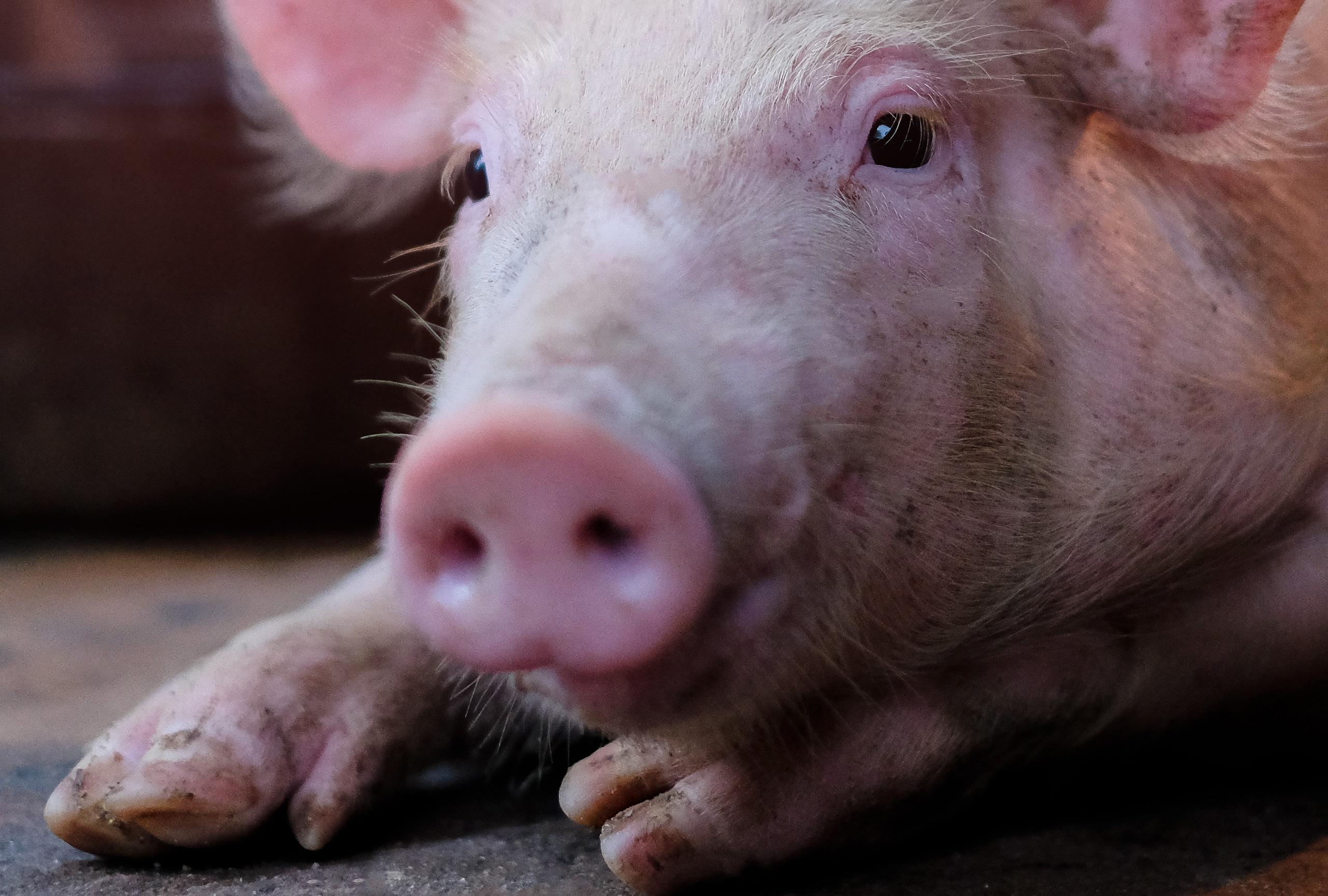 With Comments From Dr. Jennifer Brown
With Comments From Dr. Jennifer Brown
If you’ve been in the pork industry for any length of time you know one thing to be true: global pork markets are changing. European markets have moved to loose sow housing and Canada is following closely behind. While the US markets have not yet demanded all producers move in this direction, the writing's on the wall. Consumers and packers want more transparency, better conditions for pigs, healthier (and tastier) animals. It isn’t enough to wait until you are forced to change to look into alternative barn management systems. We firmly believe that producers can’t afford to be last minute adopters of new technologies for several reasons.
Consumers are demanding a change
Packaged Facts, a food and drink focused market research division of MarketResearch.com conducted a survey in early 2017 that revealed 58% of American consumers are more concerned about animal welfare than they were just a few years ago. Their concerns include how animals are being raised, handled, and slaughtered, as well as their housing, feeding, and use of antibiotics.
In response to these demands, food companies are taking
more steps to ensure that the animals in their supply chains are treated well and have a good quality of life. On the corporate level, these changes mean that producers who refuse to innovate and accept greater accountability in their swine production can expect to lose market share in the coming years.
Keeping Market Share is Easier Than Regaining Market Share
With the changing landscape it is easy to see that topdown pressure will eventually land in the lap of the individual producer. Whether losing a contract with a packer
46
seems like a big deal at this stage in the game or not, basic economics show that it is much easier to keep your current customers happy rather than try to make up for losing their business. With huge packers like Smithfield and Maple Leaf already committing to group-sow housing, pressure is mounting for other large producers, and small producers as well.
Tighter Markets Demand More Accountability and Automation
Markets go up and markets go down. Despite 2017 being a banner year for pork exports, markets inevitably tighten either due to natural market swings, or political decisions. When markets are up, it is a good time to invest in technology that will help you when markets are down.
As margins tighten for producers, expenses and inefficient processes that may have seemed insignificant previously, suddenly become much more important. It may seem easier to continue with individual stall housing (at least in the United States) since markets have not yet demanded greater accountability in this area. Or perhaps, with a large well-trained staff it may not seem that difficult to continue hand sorting sows by parity and aggression or to use shoulder stall type systems or even free-access ESF systems. But remember, if and when markets tighten, your overhead and labor costs, as well as your management style and systems have to be able to endure those smaller margins.
Dr. Jennifer Brown, a leading swine researcher working with the Prairie Swine Centre, had this to say.
“You need to recognize that the cost of the installation isn’t when you are done paying. The long-term cost of management is higher in systems where all sows can access the feed. You have social hierarchies and (with competitive feeding) over and under feeding, leading to greater variation in body condition. So with competitive feeding systems you generally add more food for the skinnier sows, and you also need staff to observe animals every day at feeding time to look for issues with body condition and identifying any ‘dropouts’ that should be removed.
With these feeding systems, when you form groups they need to be small and you need to be good at selecting groups that are matched for size and parity, otherwise the smaller sows will take the brunt of it. This management isn’t needed with full ESF. With ESF these long term problems are eliminated because you have individual feeding; and monitoring is simple because feeder access is recorded automatically.”
Full electronic feeding systems like that offered by Nedap, are more than just individual sow feeders; they are barn management systems. They allow you to decrease daily herd management activities and increase the number of sows you can place in each pen by automating essential daily activities including feeding, sorting, and more.
These systems are able to separate animals for health checks, vaccinations, culling, or any other activity based on
their RFID chip. They also incorporate heat detection and mark the sows for oestrus, alert for issues with feeding, and have options to collect accurate weights rather than relying on subjective BCS scores or time-consuming backfat measurements.
Full ESF barn management systems allow you full access to your herd’s health profiles on wireless internet anywhere throughout your barn at the touch of a button on your computer or cell phone. Saving money on feed costs, being able to dynamically breed sows as they enter oestrus, and being able to easily single out animals that need to be culled, treated by a vet, or vaccinated can be the difference between success and failure in tight markets.
Young Producers Want Data
Data is everywhere now. Just look at your smartphone and you’ll see that our lives are run by algorithms. The advertisements you see online are hand chosen for you based on the heaps of data they’ve collected on you. Why do they collect this data? Because data allows for greater efficiency in their processes. The same is true for pork production.
With data collected from Nedap systems, producers are able to instantly see which animals are underperforming and which animals are consistently having issues with breeding. All your staff has to do is read the data. Producers are consistently finding that this increase in technology and the information available is allowing them to produce more and better pigs. And that is exciting to the next generation of producers just coming out of college or just entering the family business. They are used to computers and databases, and they are attracted to cutting edge business practices, not just because it is trendy but because it improves operations.
Dr. Jennifer Brown noted that she has seen this shift. She encourages producers to look at their operation in total when considering any change.
“Be sure to look at problem areas and look to the future. Do you want to increase your herd? Are you trying to attract younger family members to take on the business? These are great reasons to take on an automated system,” Brown said. “One of the producers we work with, John van Engelen, has wireless internet throughout his entire barn. He can check his sow records and monitor them from anywhere. Now both his son and daughter are joining him and they are expanding the operation.”
As you enjoy the market upswing, make sure you are also considering investing in the future. Technology is constantly advancing. Continuing business as usual will not work. Consumers want change, packers want change, and the next generation of producers want change. The producer of the future will be driven by data, allowing for the unique opportunity to engage science and cutting-edge technology with centuries of swine farming best practices.
47 New Standard Hog Update 2017
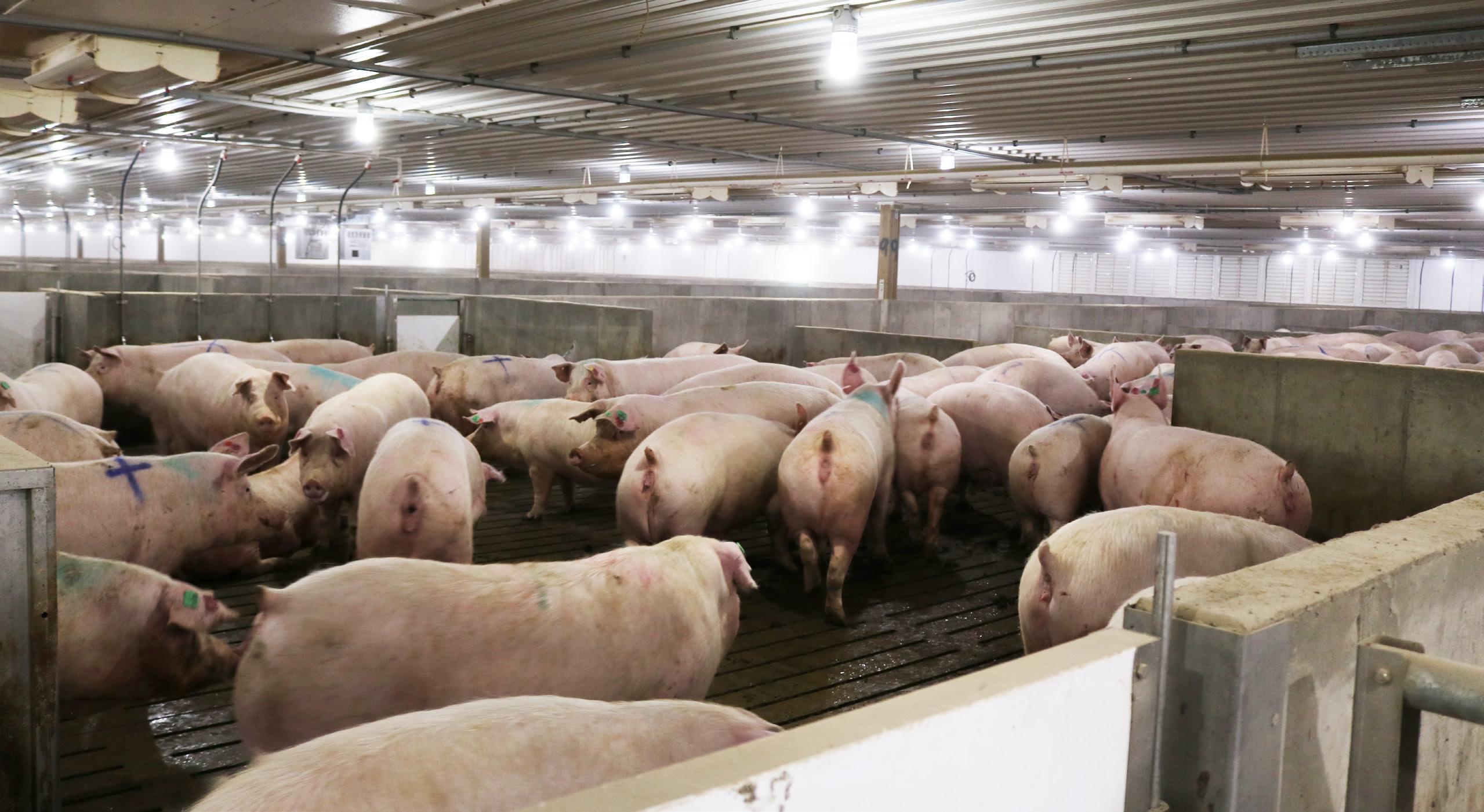
48 www.newstandard-group.com New Standard has three regional offices to bring their expertise in sow and turkey housing directly to you New Standard US Contact Us Tim Kurbis: 605-496-9696 info@newstandardus.com New Standard US 1200 E Robur Dr. Sioux Falls, SD 57104 New Standard Ag Contact Us Kevin Kurbis: 204-485-4600 kevin@newstandardag.com New Standard Ag Inc 961 Harriot Rd St. Andrews, MB R1A 4H6 New Standard West Contact Us Kees (Kase) van Ittersum: 403-650-5051 kase@newstandardwest.com New Standard West Site 12, RR#6, Box 49 Calgary, AB T2M 4L5
































































 By: Kevin Kurbis
By: Kevin Kurbis








 With Comments From Dr. Jennifer Brown
With Comments From Dr. Jennifer Brown
